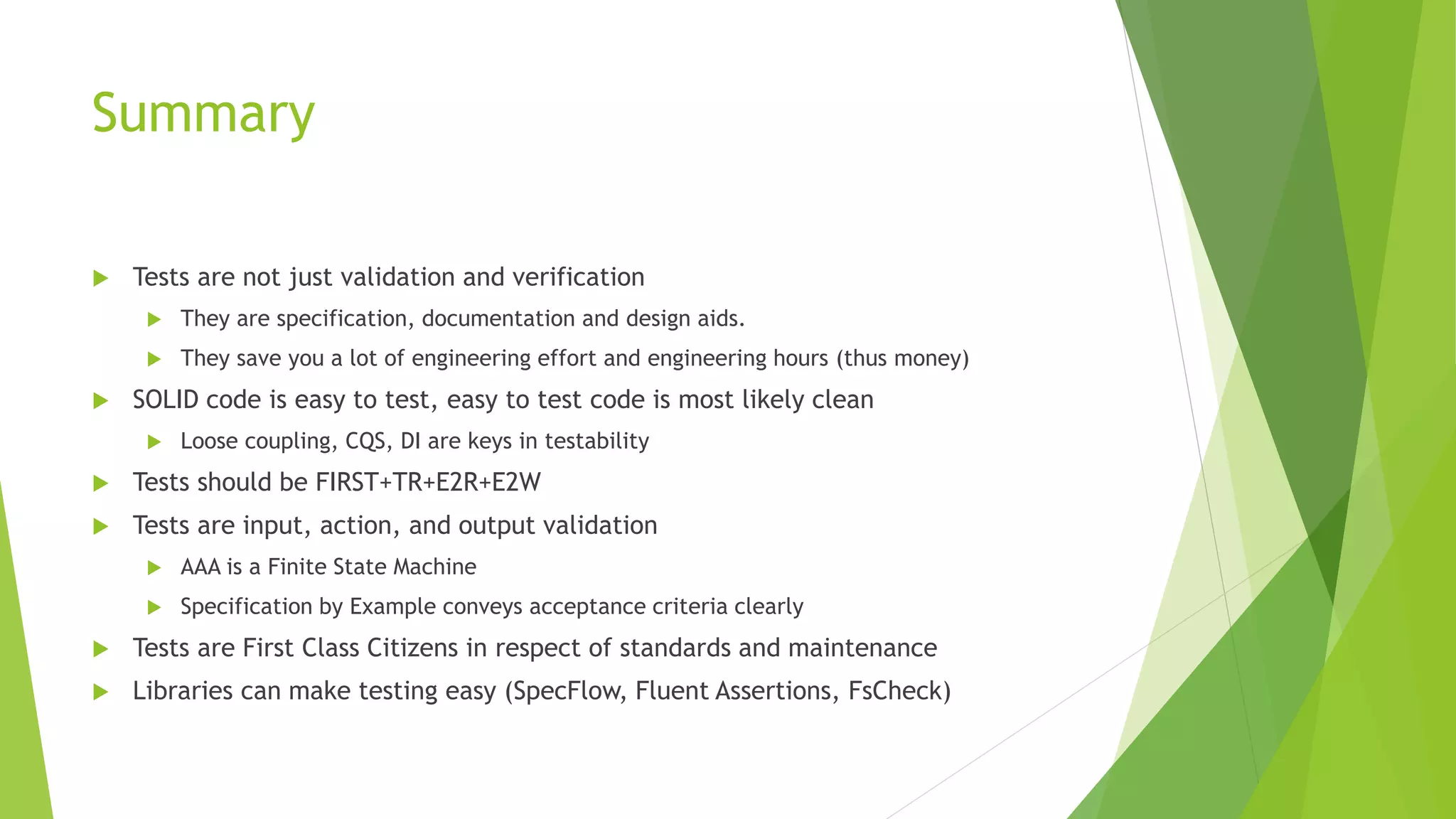The document discusses best practices for TDD, BDD, and unit testing, emphasizing the importance of testing for code maintainability and flexibility. It highlights essential aspects such as what to test, the anatomy of tests, coverage principles, and guidelines for writing testable code, including the use of test doubles. The document also addresses the relationship between solid principles and unit testing, and how good test architecture can improve code quality.
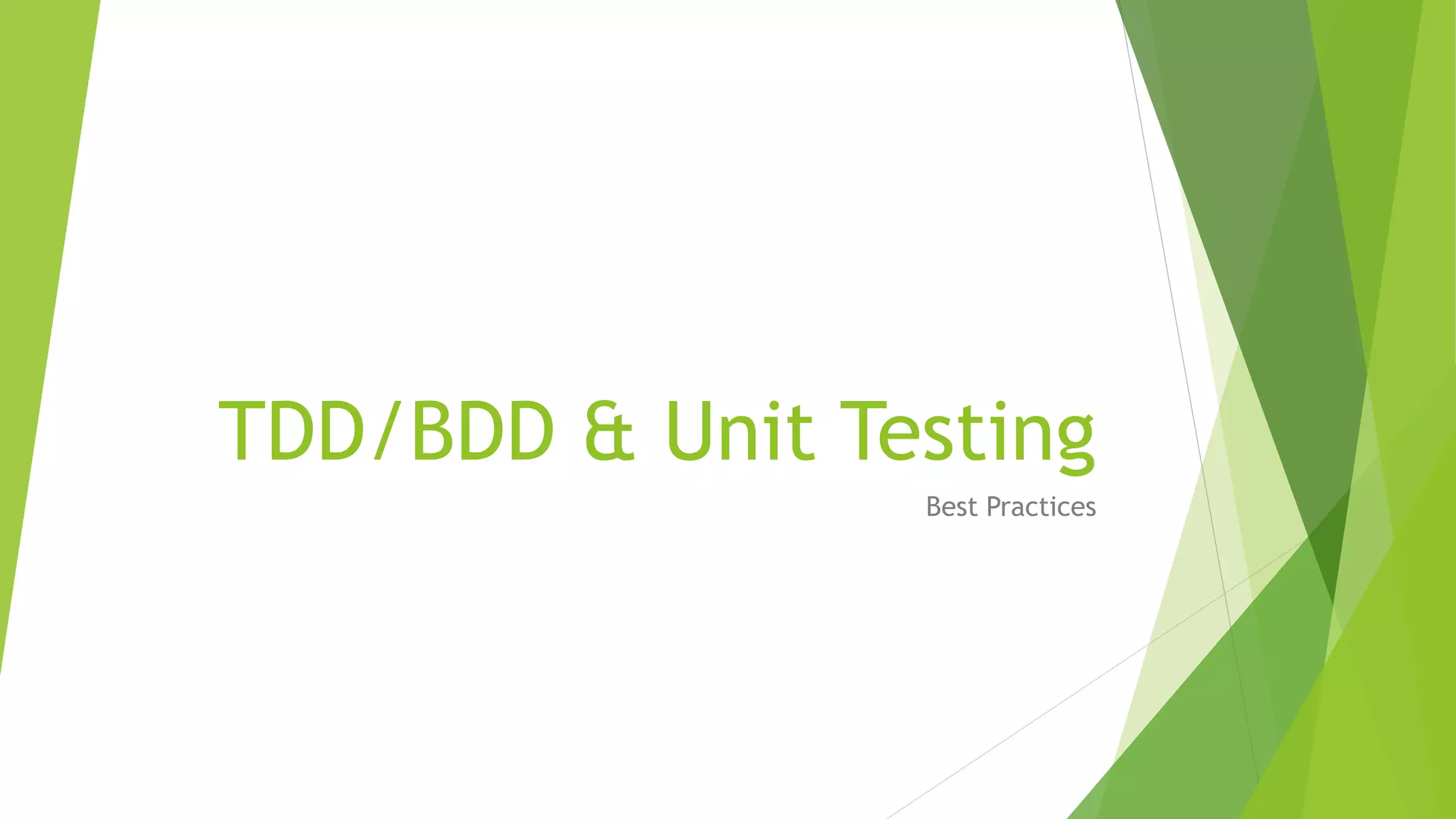

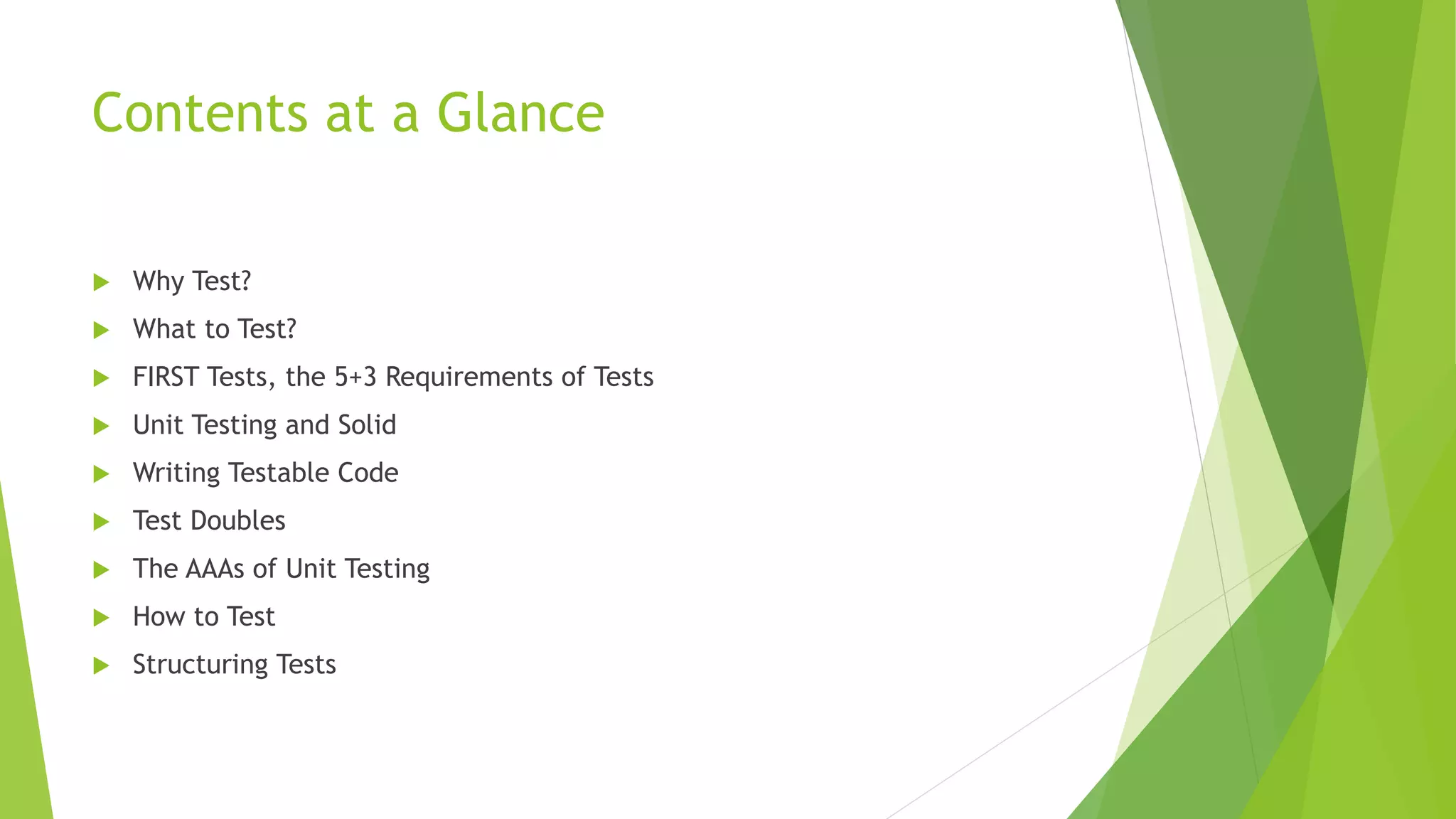

![“
”
It is unit tests that keep our code flexible,
maintainable, and reusable. The reason is simple. If you
have tests, you do not fear making changes to the code!
Without tests every change is a possible bug. No matter
how flexible your architecture is, no matter how nicely
partitioned your design, without tests you will be
reluctant to make changes because of the fear that you
will introduce undetected bugs.
[Clean Code – Robert C. Martin]
Tests are there for the developer to enable refactoring.
Tests are there for the developer and the PO to provide a living specification.
Tests are there for the developer to provide a living documentation.
Tests are there for the business to provide a fast feedback loop for catching bugs
early.](https://image.slidesharecdn.com/tddbestpractices-180730164557/75/TDD-Best-Practices-5-2048.jpg)
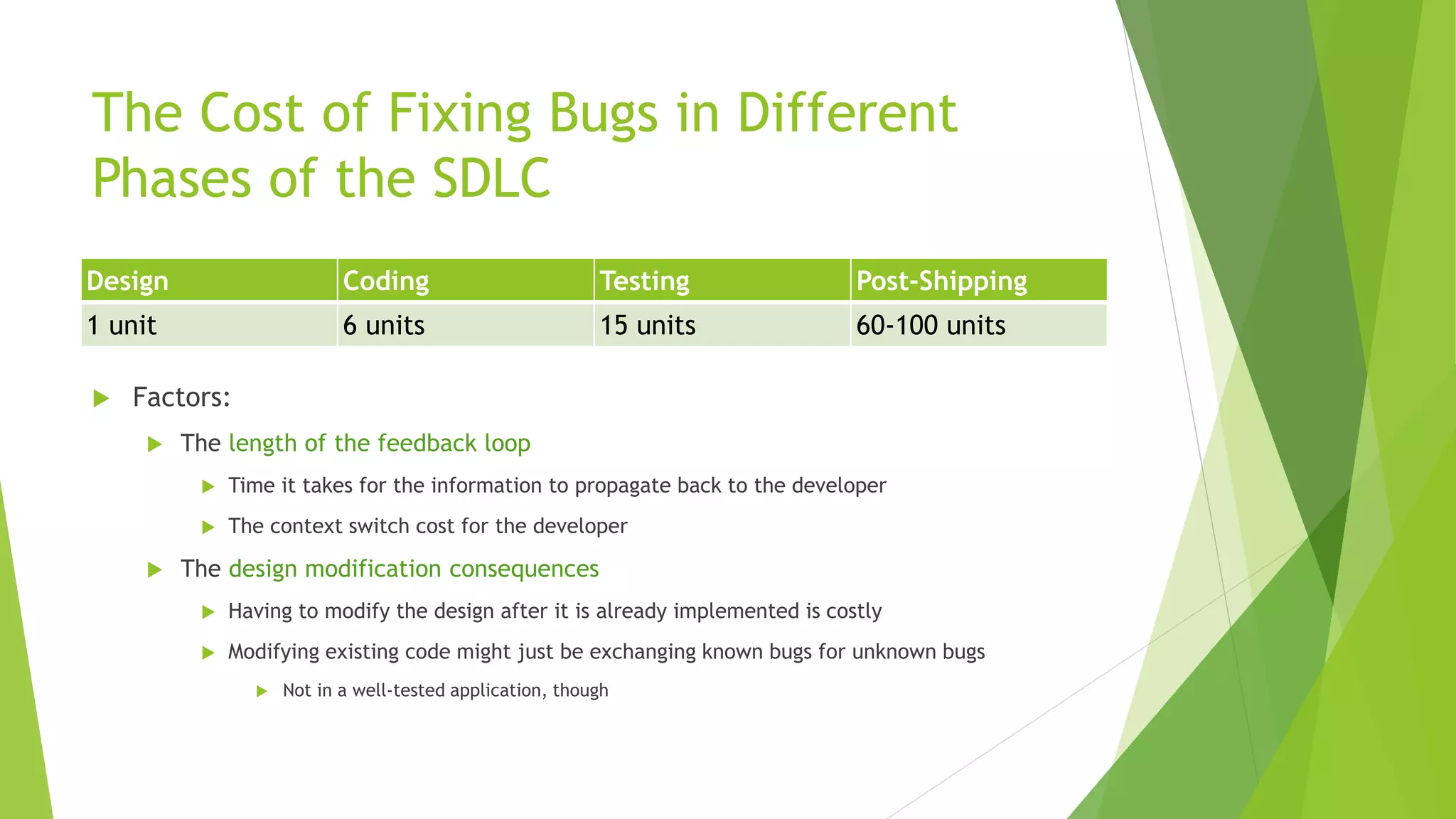
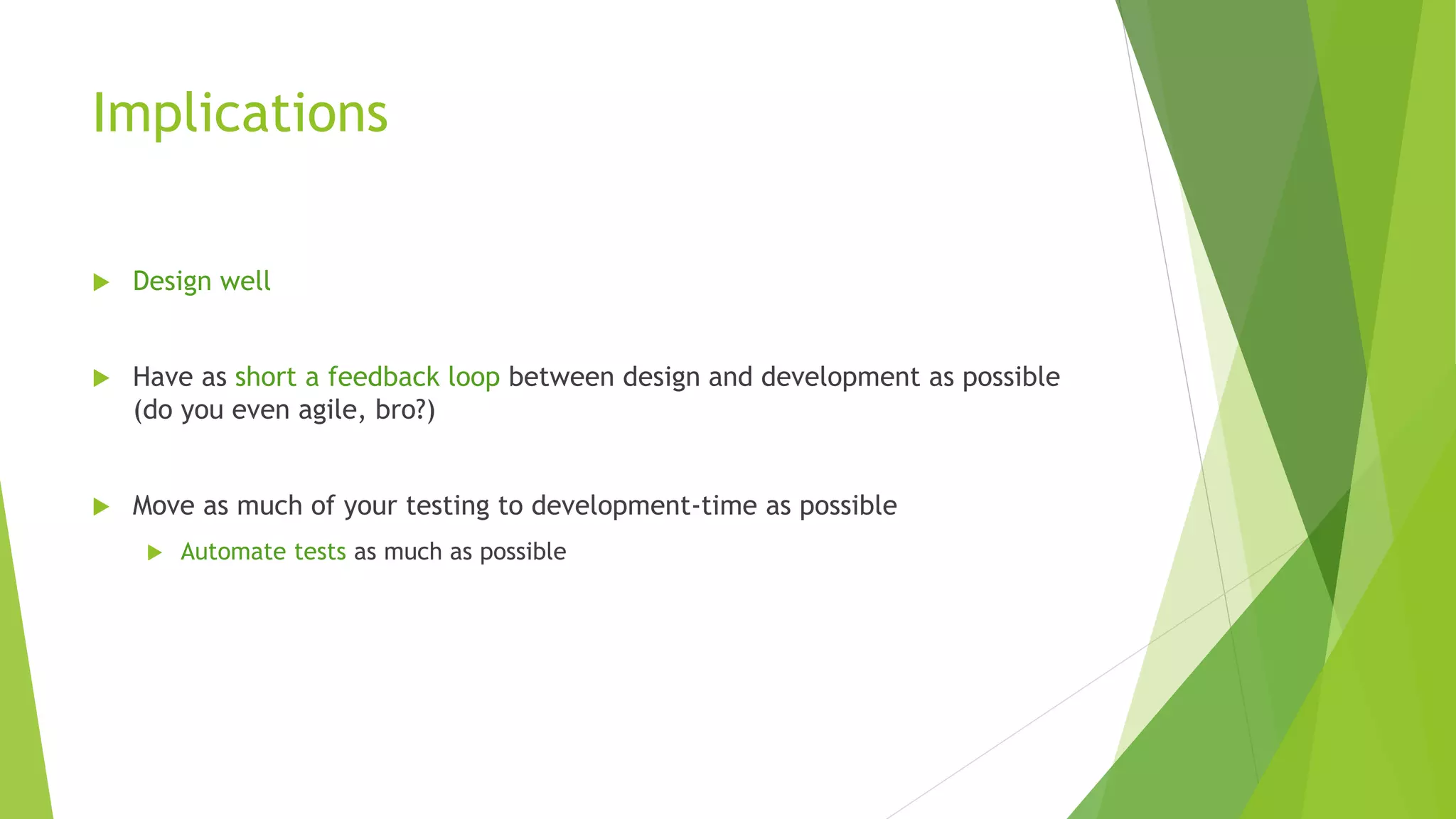

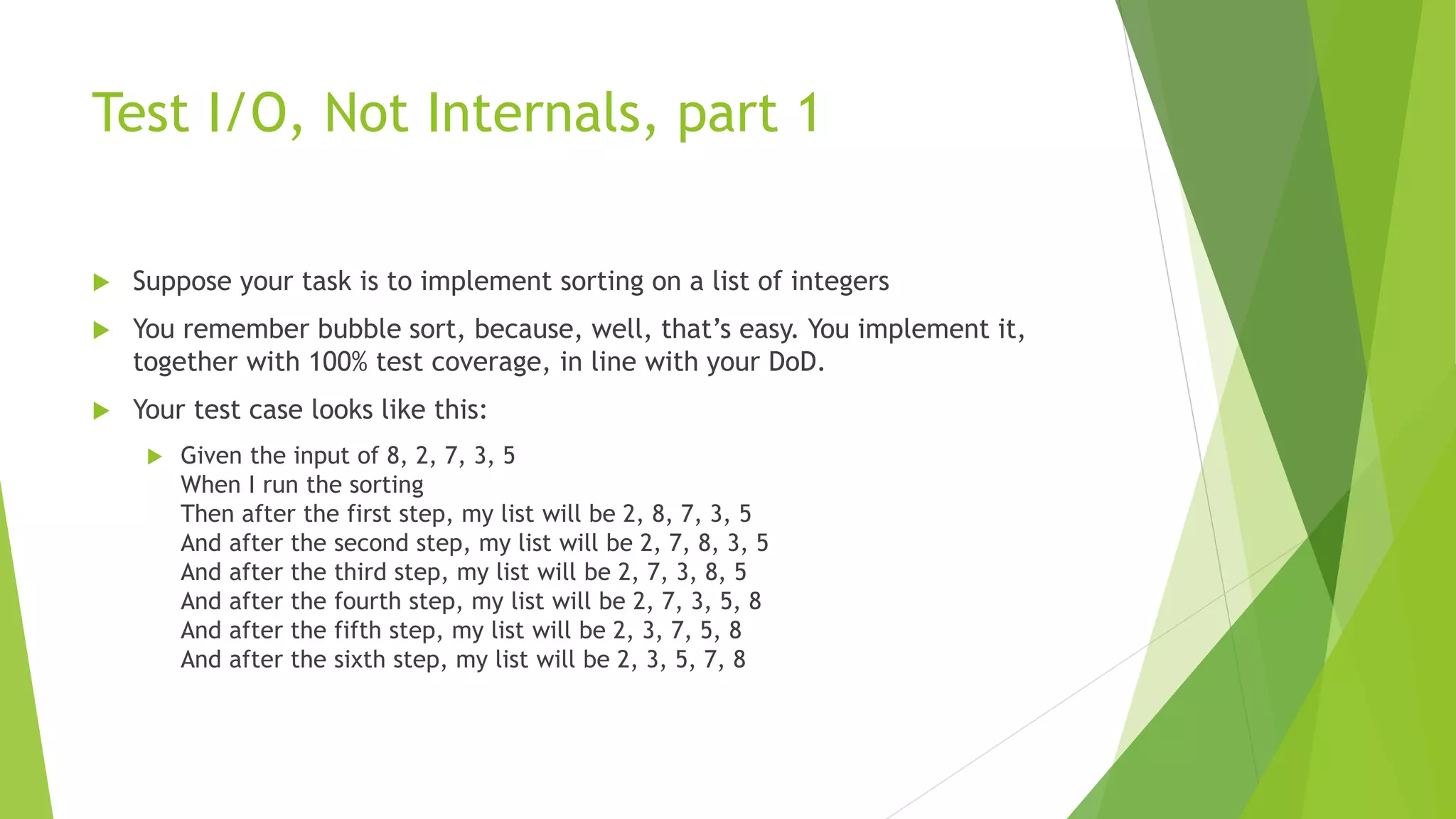

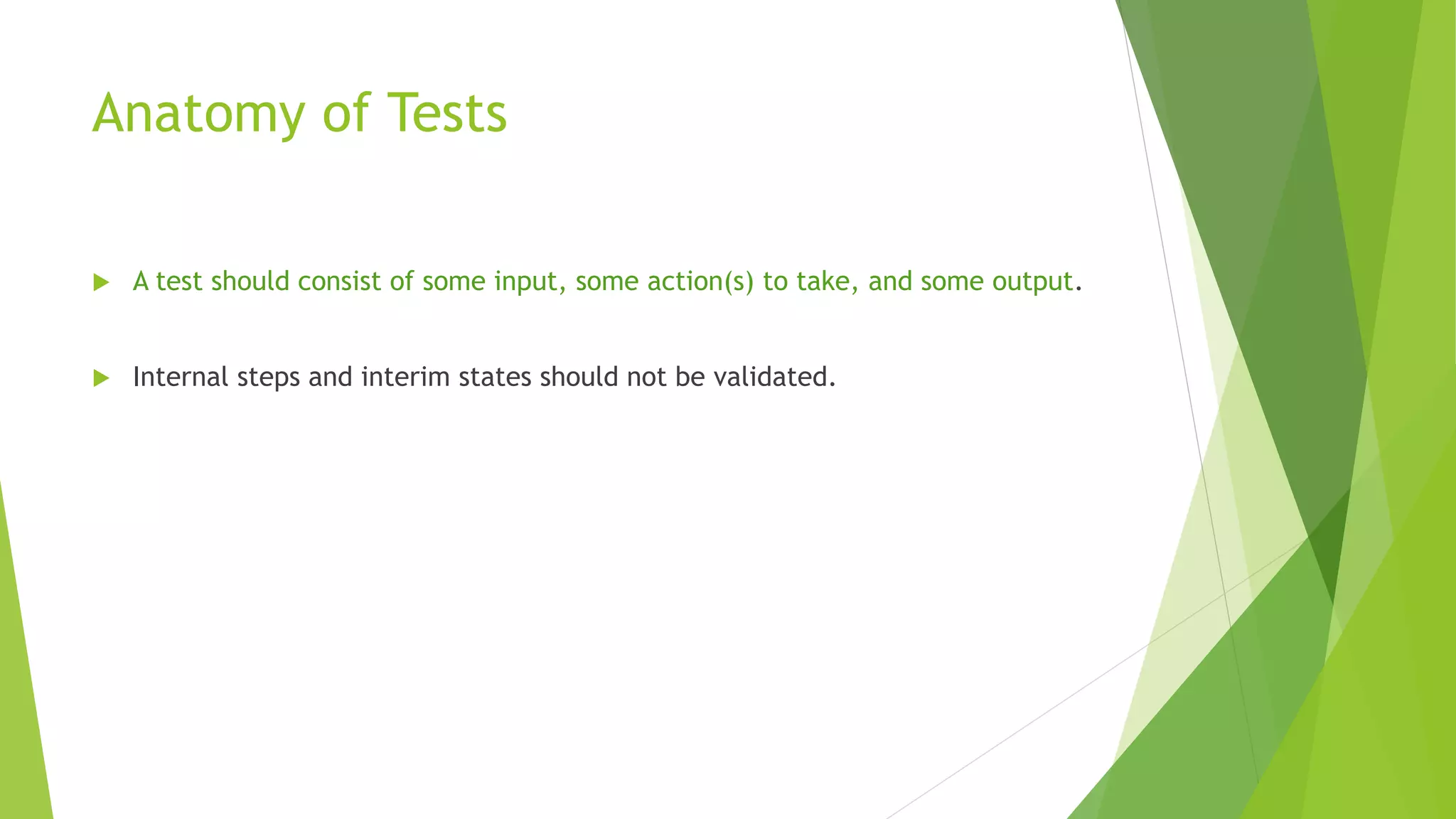
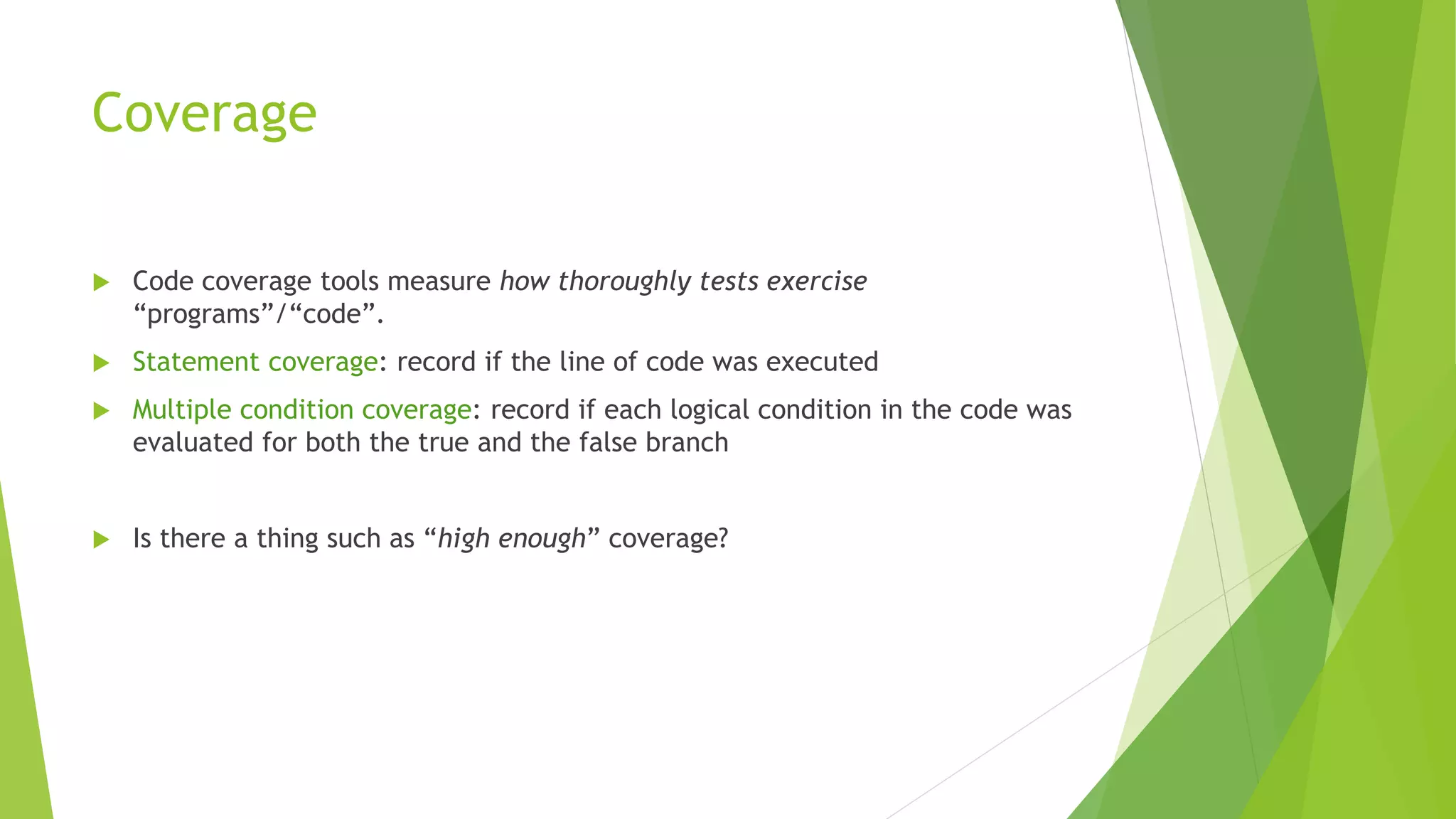
![“
”
How much of the code should be tested with these automated unit
tests? Do I really need to answer that question? All of it! All. Of. It.
Am I suggesting 100% test coverage? No, I’m not suggesting it. I’m
demanding it. Every single line of code that you write should be
tested. Period.
Isn’t that unrealistic? Of course not. You only write code because you
expect it to get executed. If you expect it to get executed, you
ought to know that it works. The only way to know this is to test it.
[Clean Coder – Robert C. Martin]
Anyways, if you work in test first style TDD, your coverage will automatically be
very close to 100%.](https://image.slidesharecdn.com/tddbestpractices-180730164557/75/TDD-Best-Practices-13-2048.jpg)
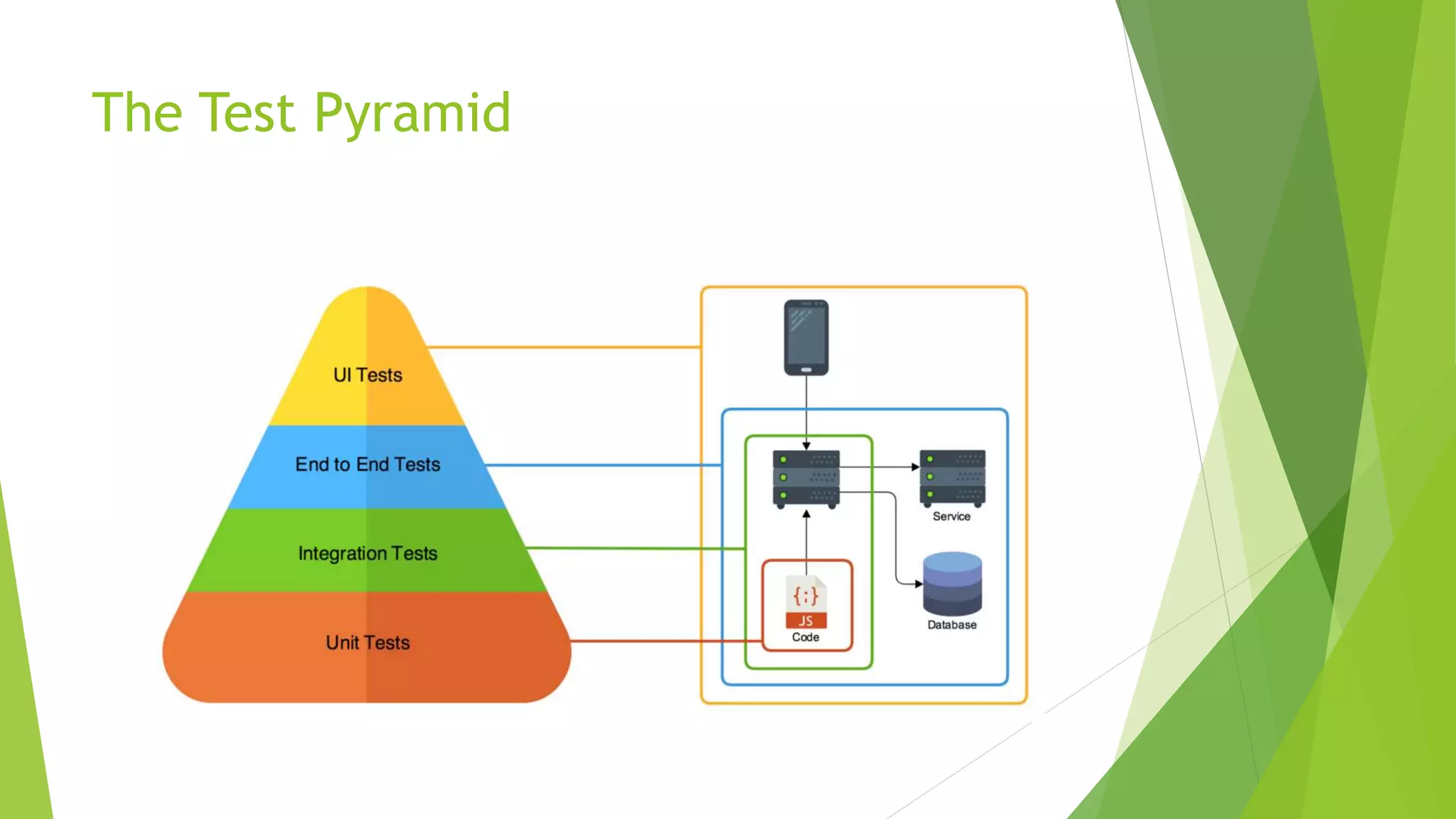
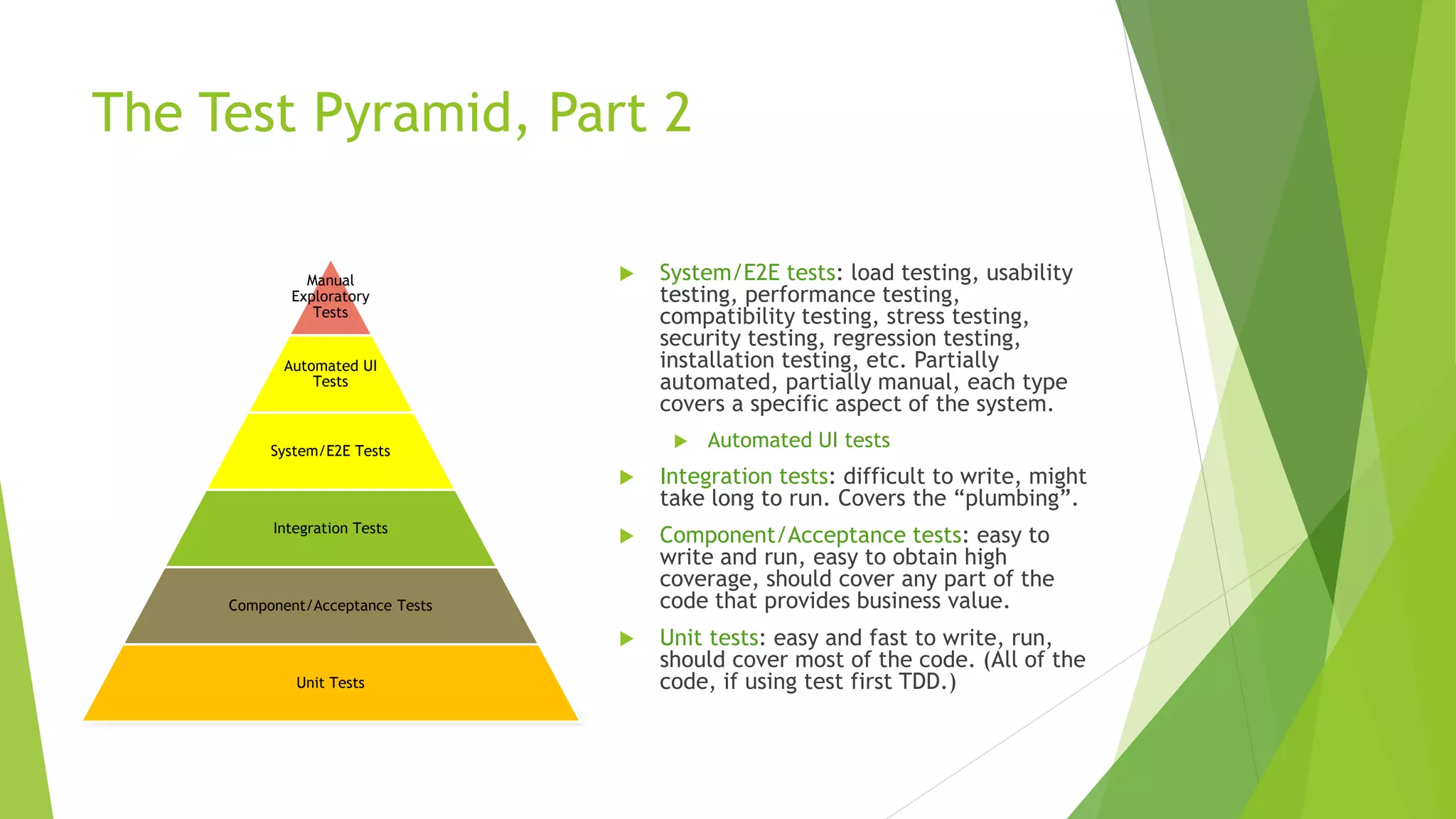
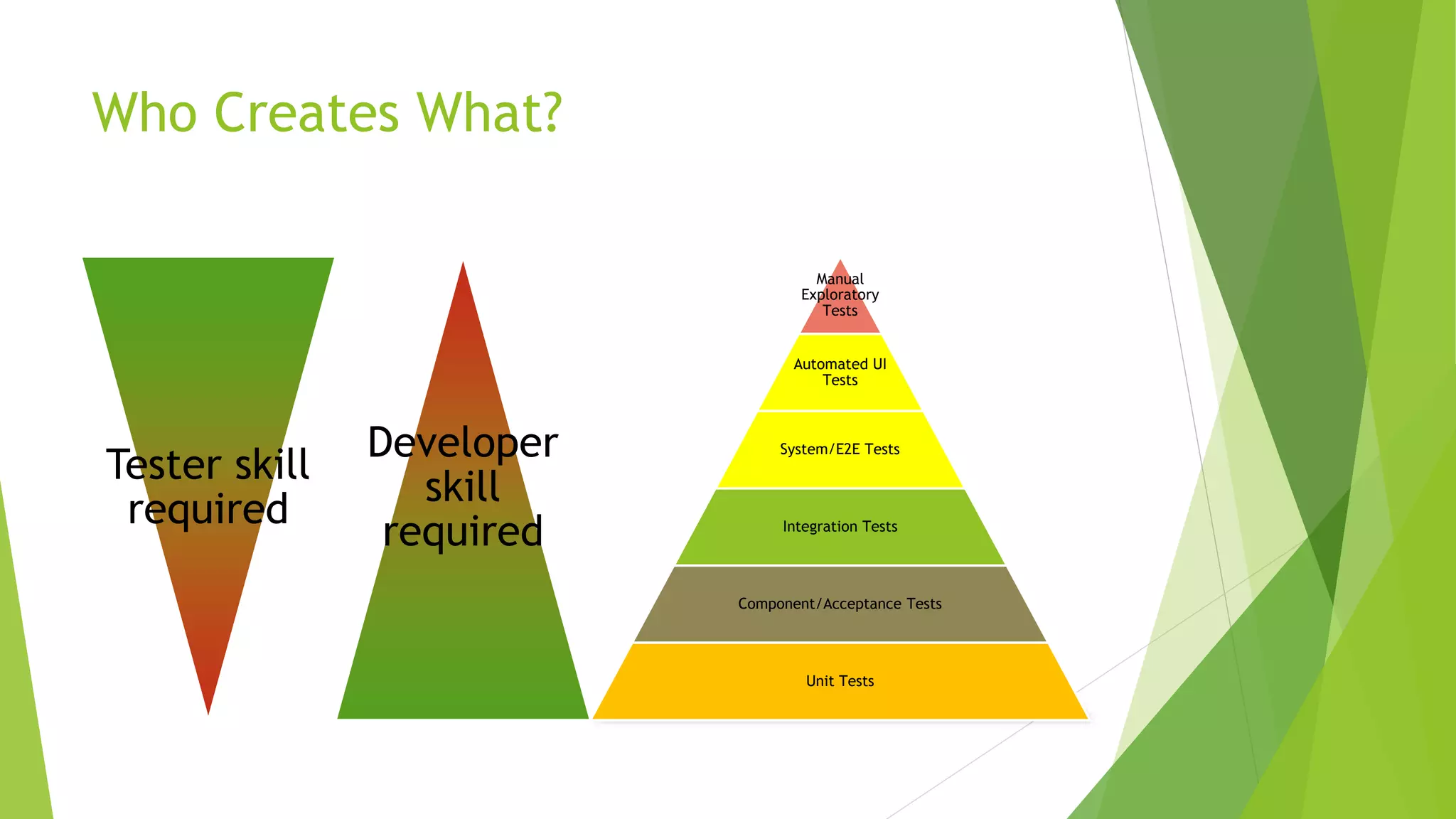
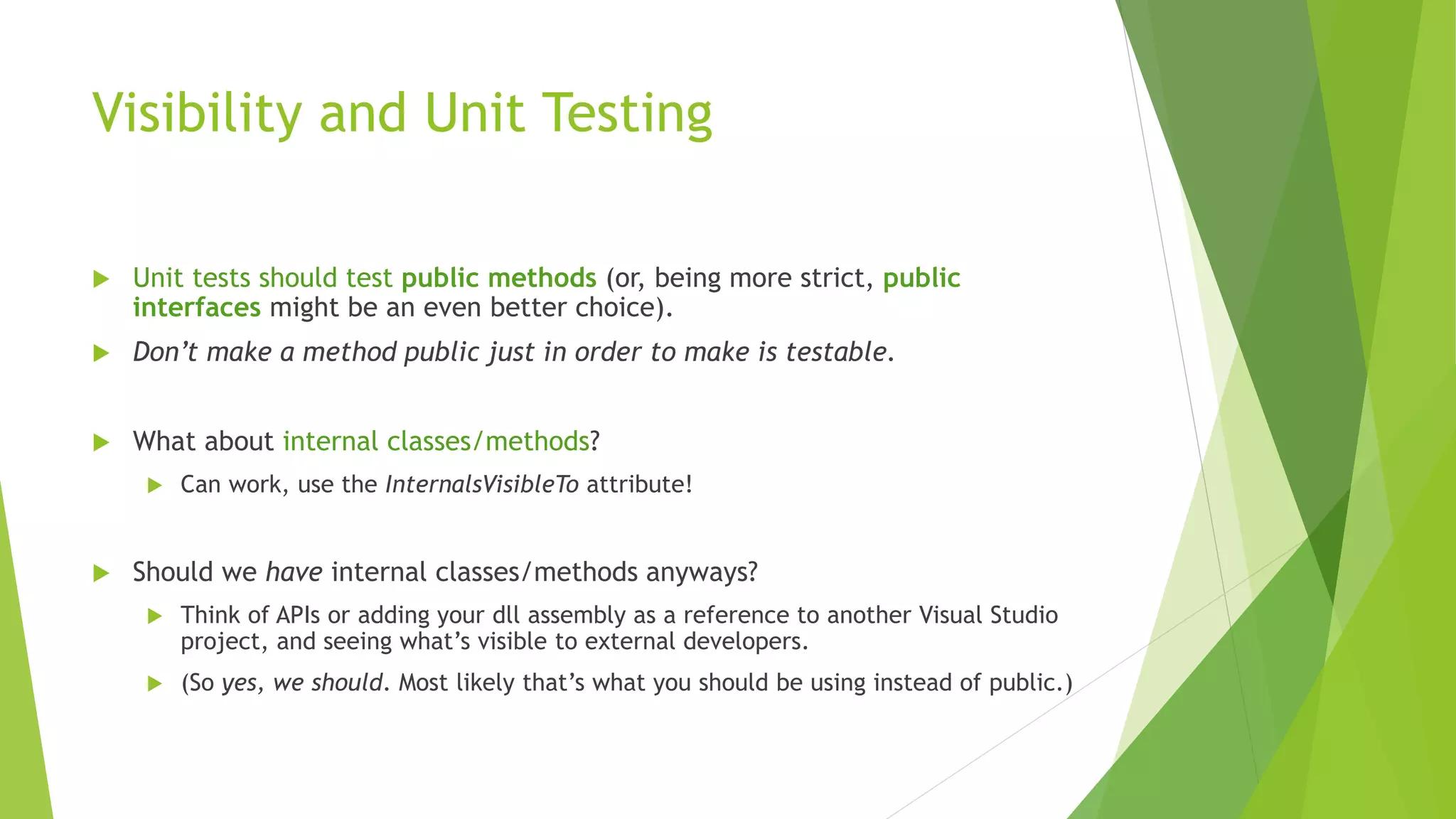
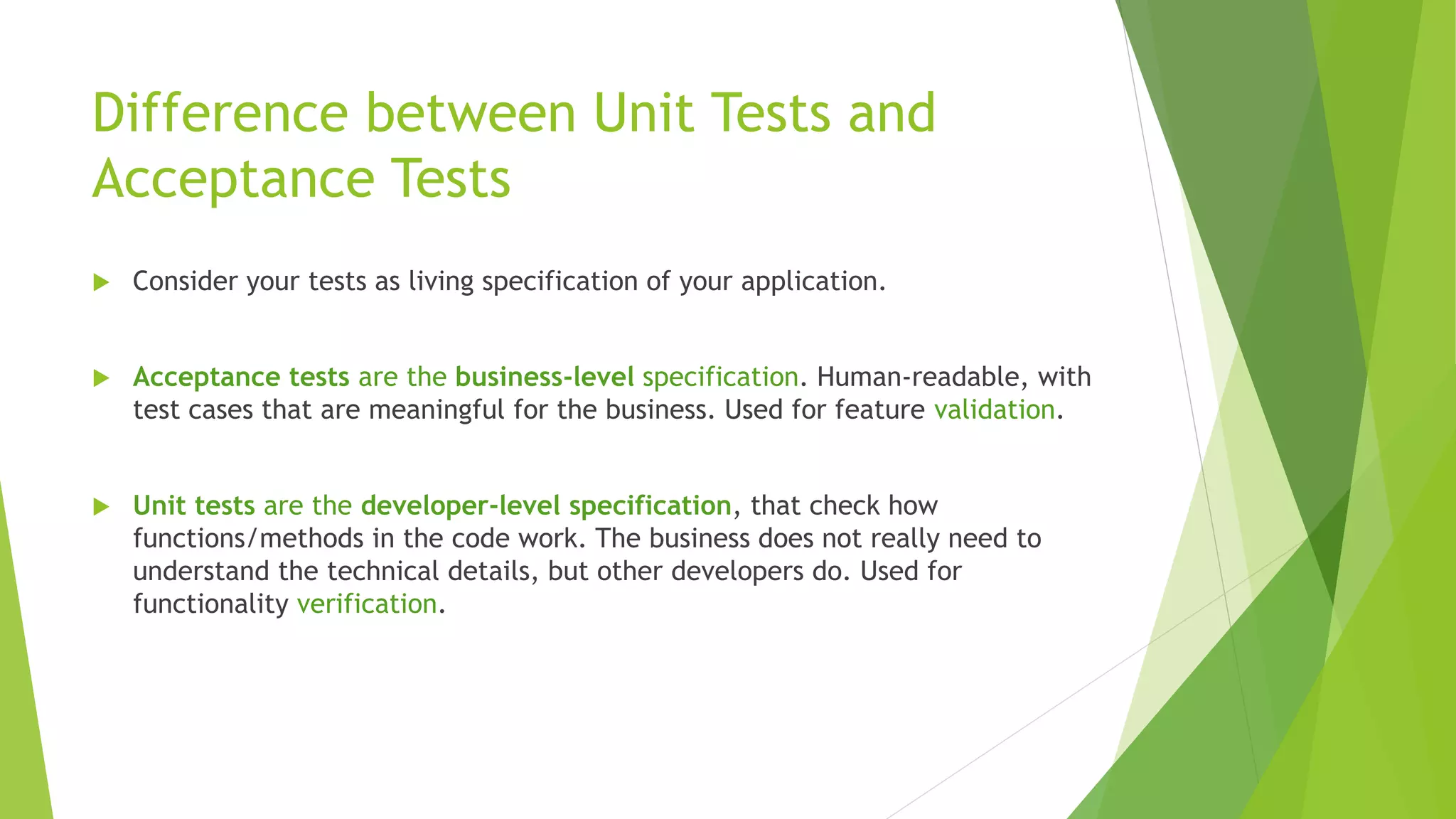
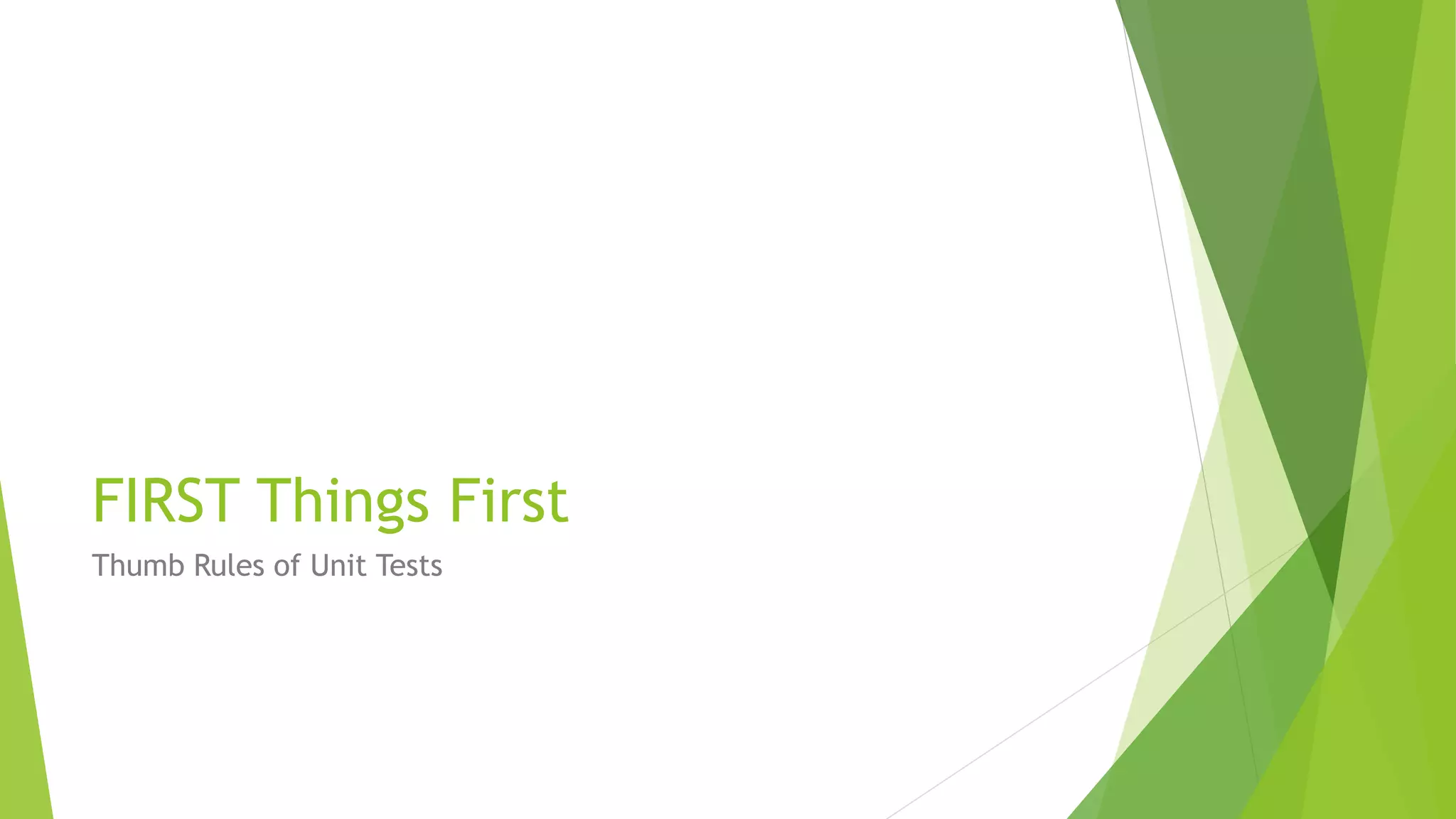
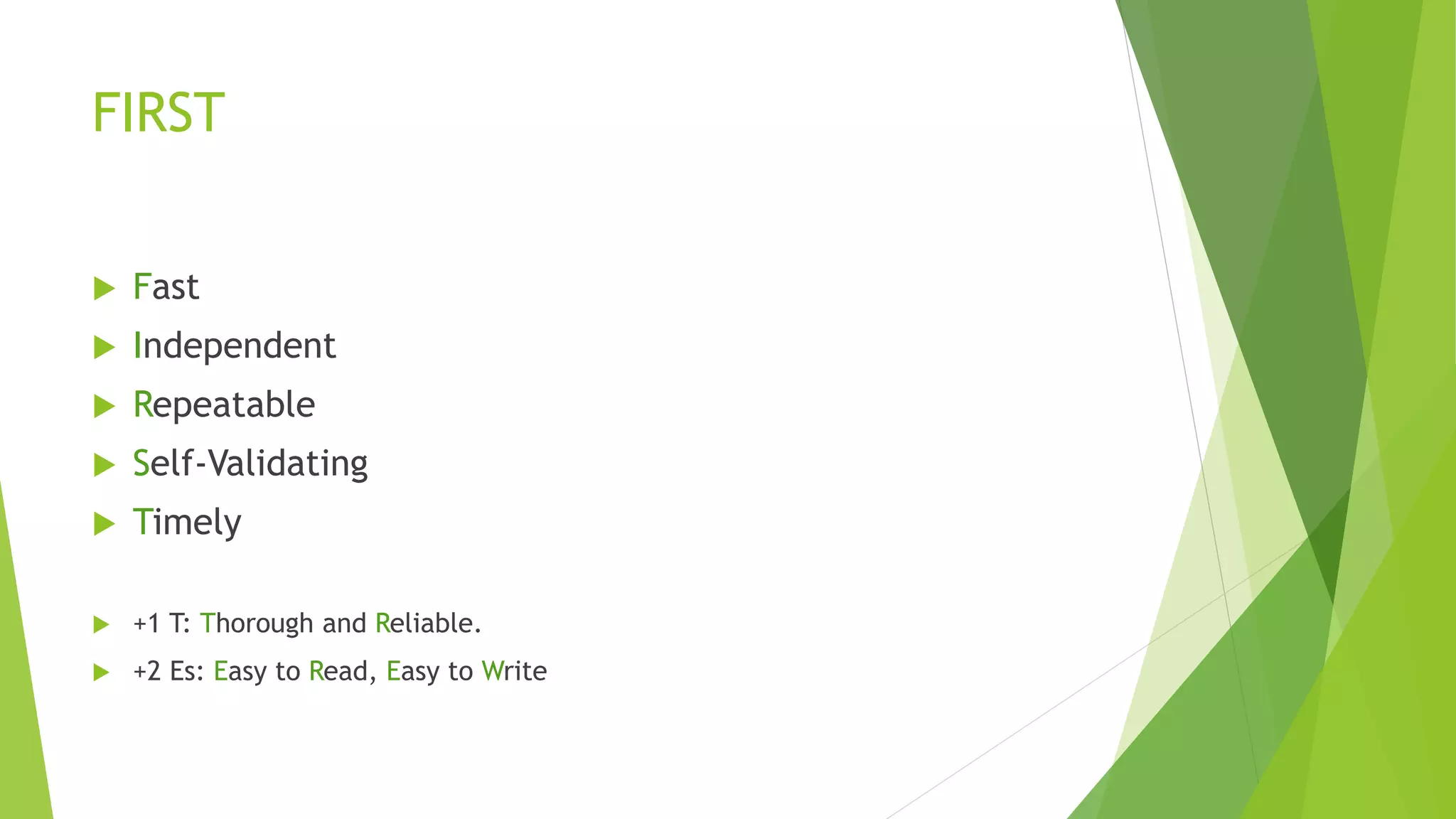

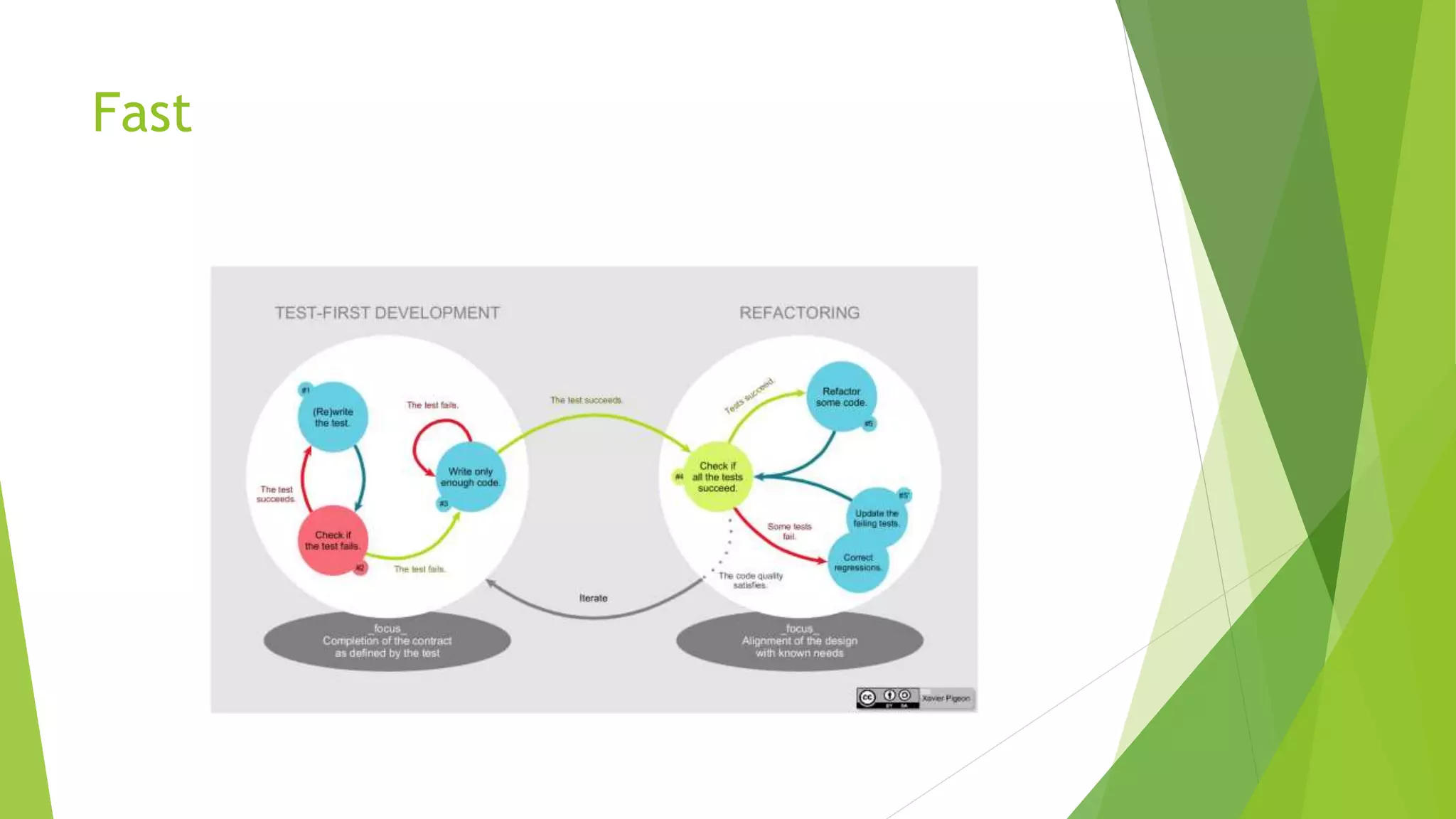
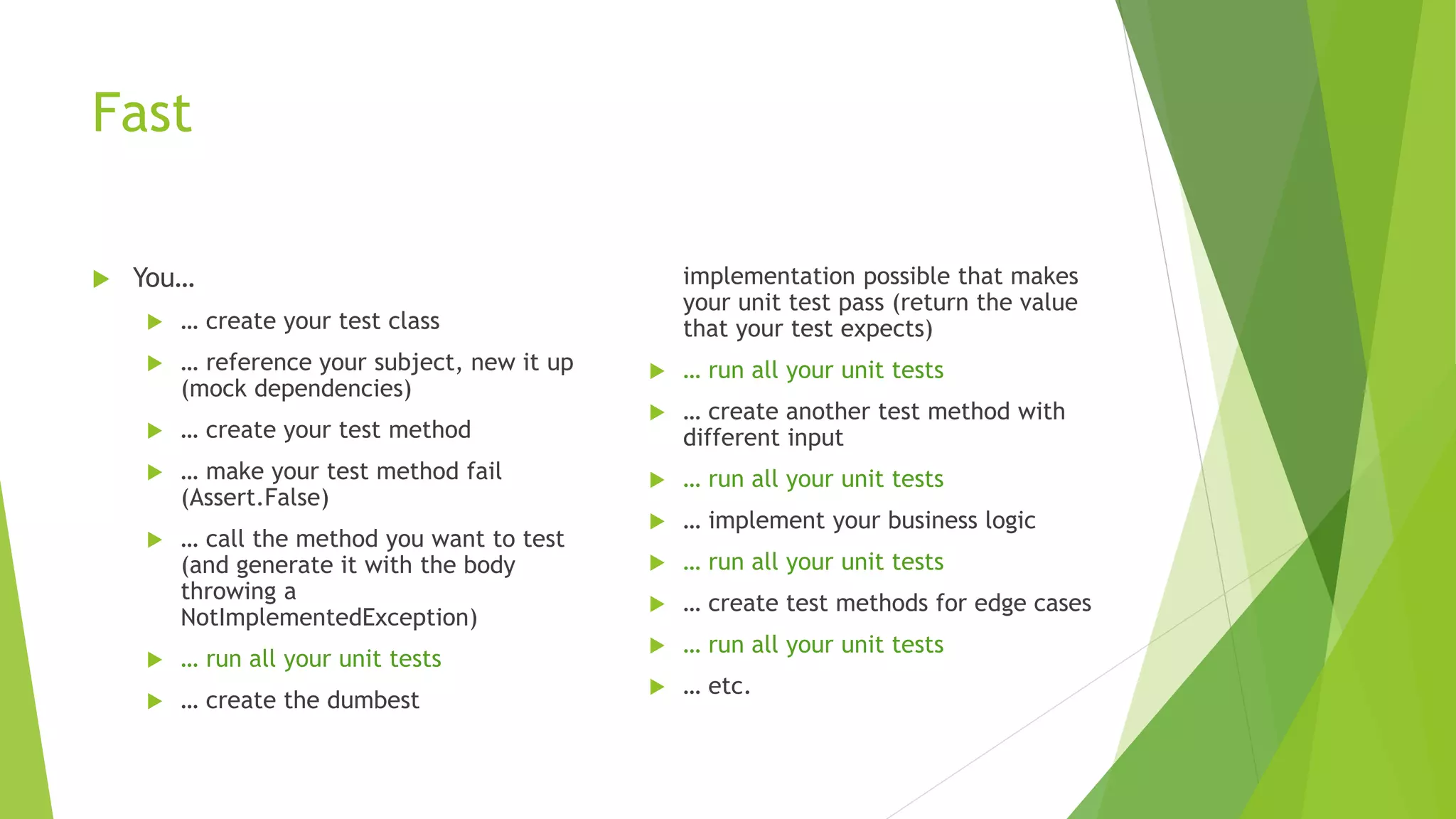
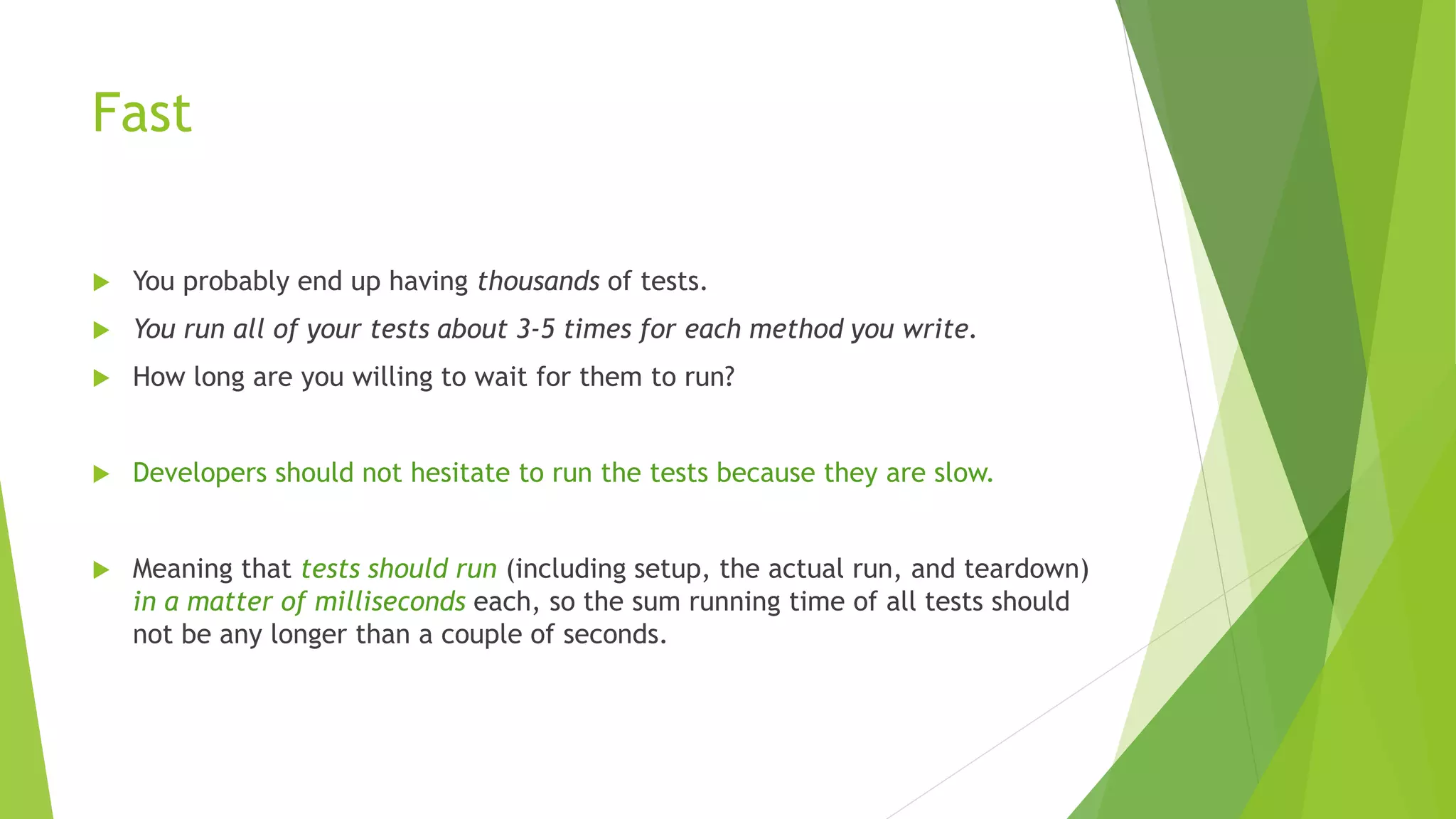
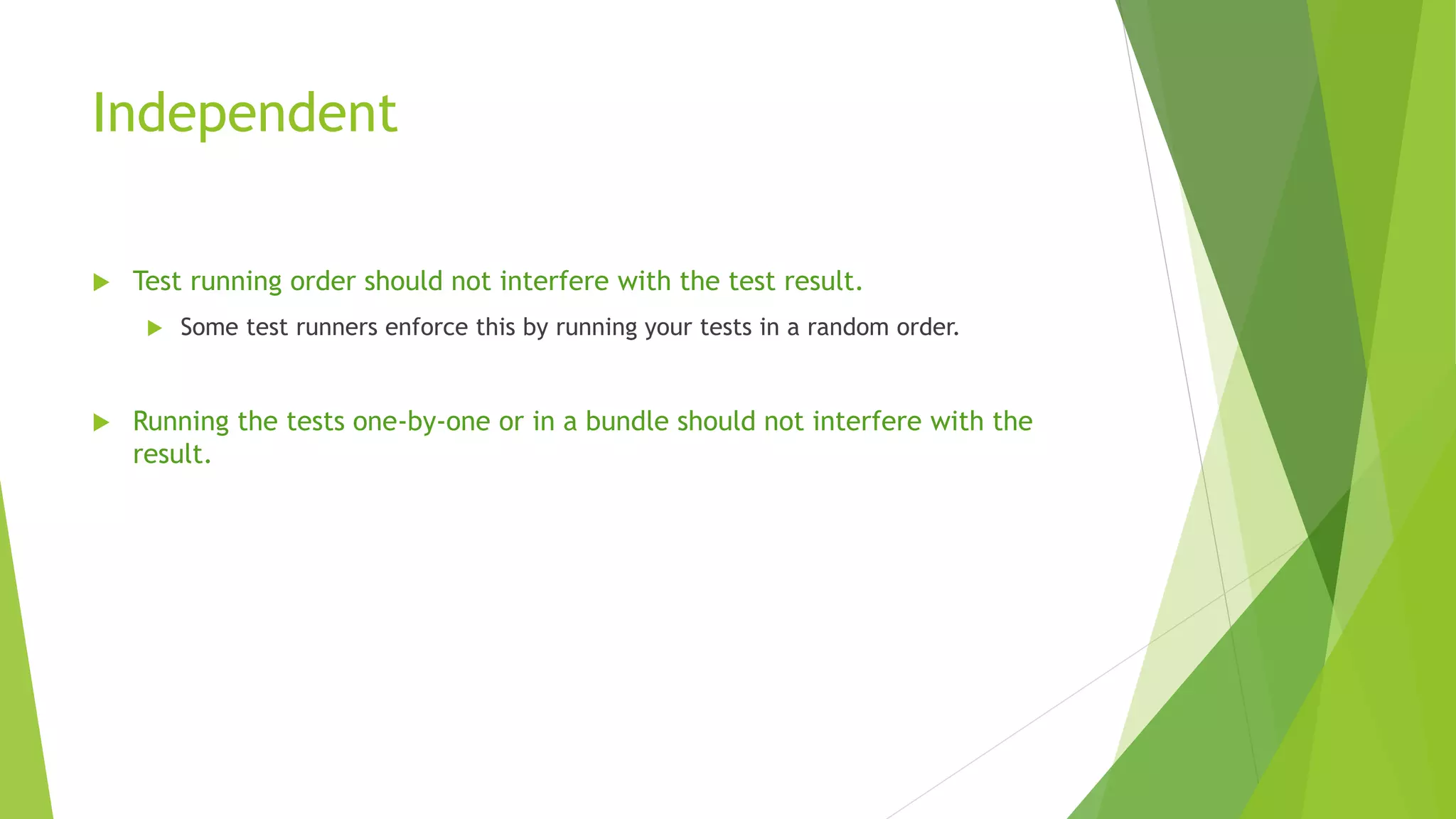
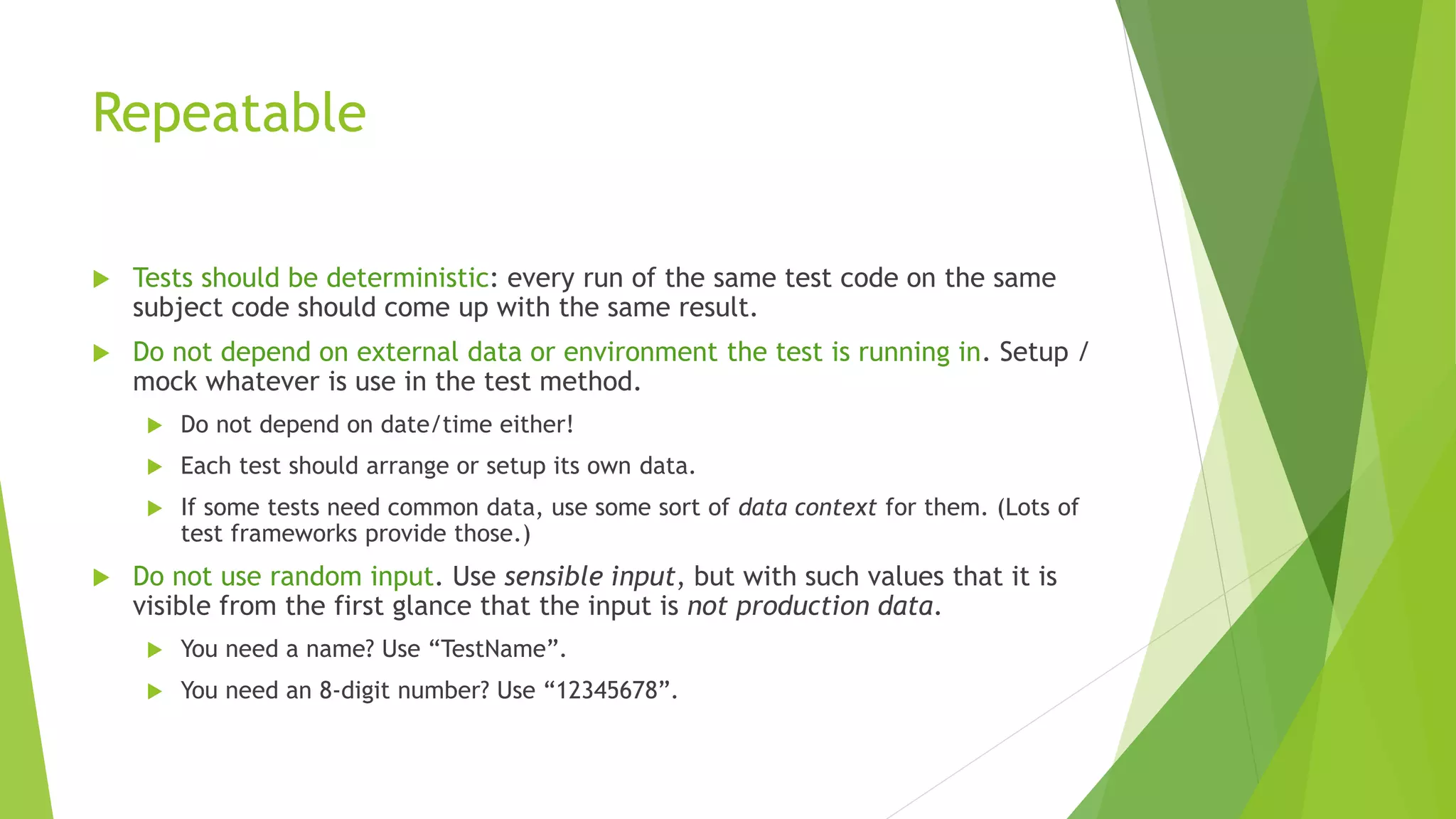
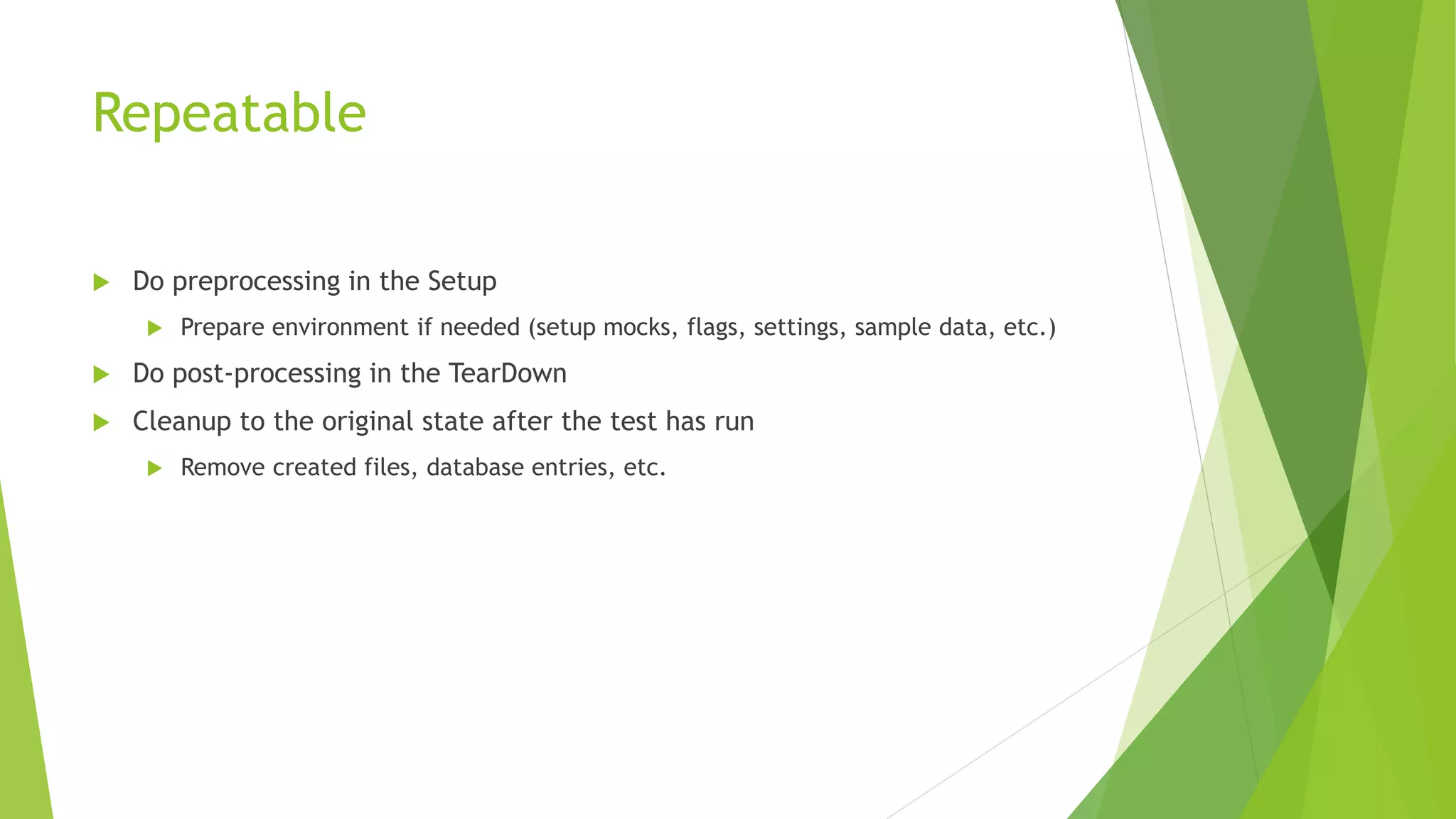
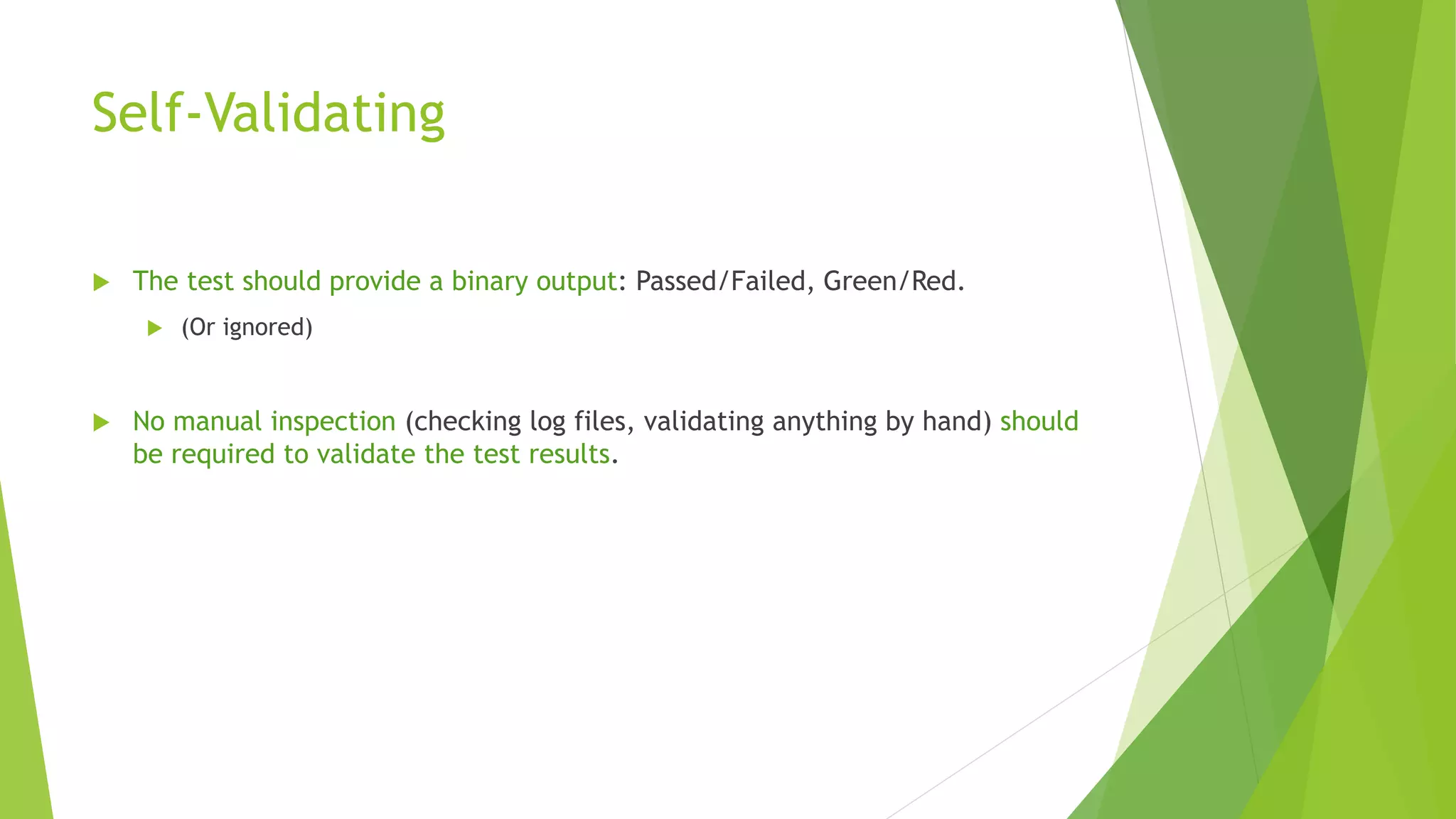
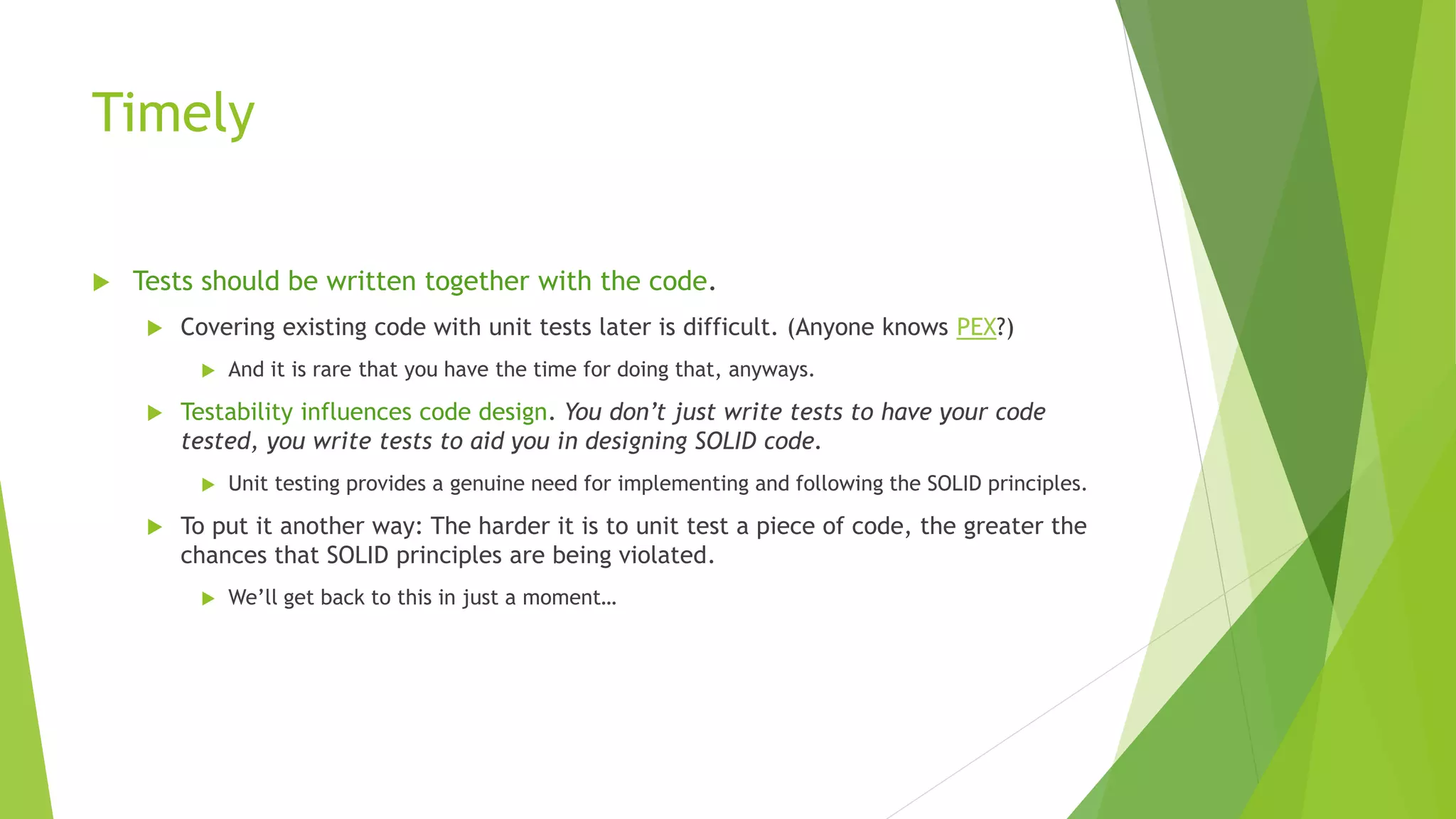
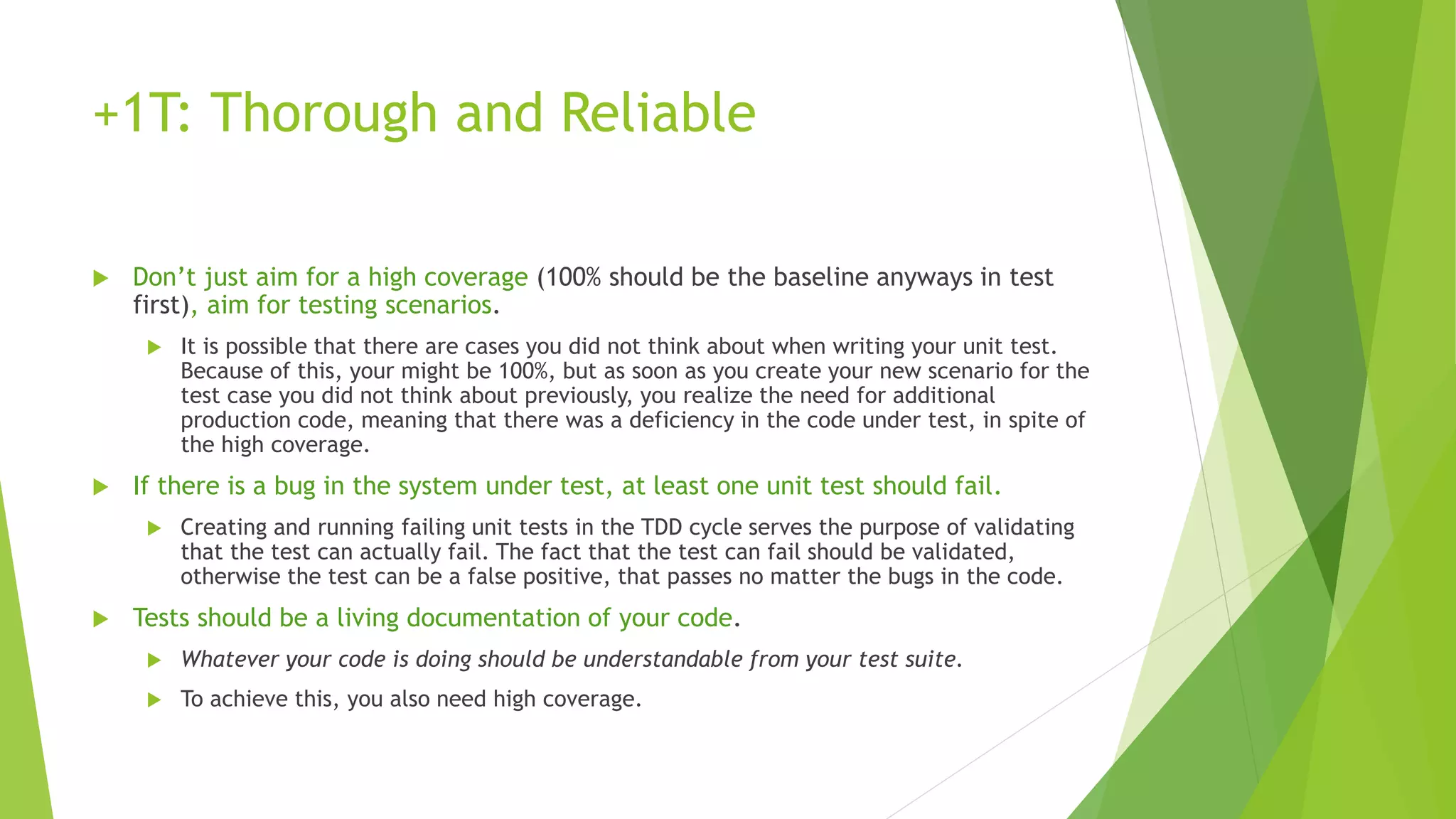
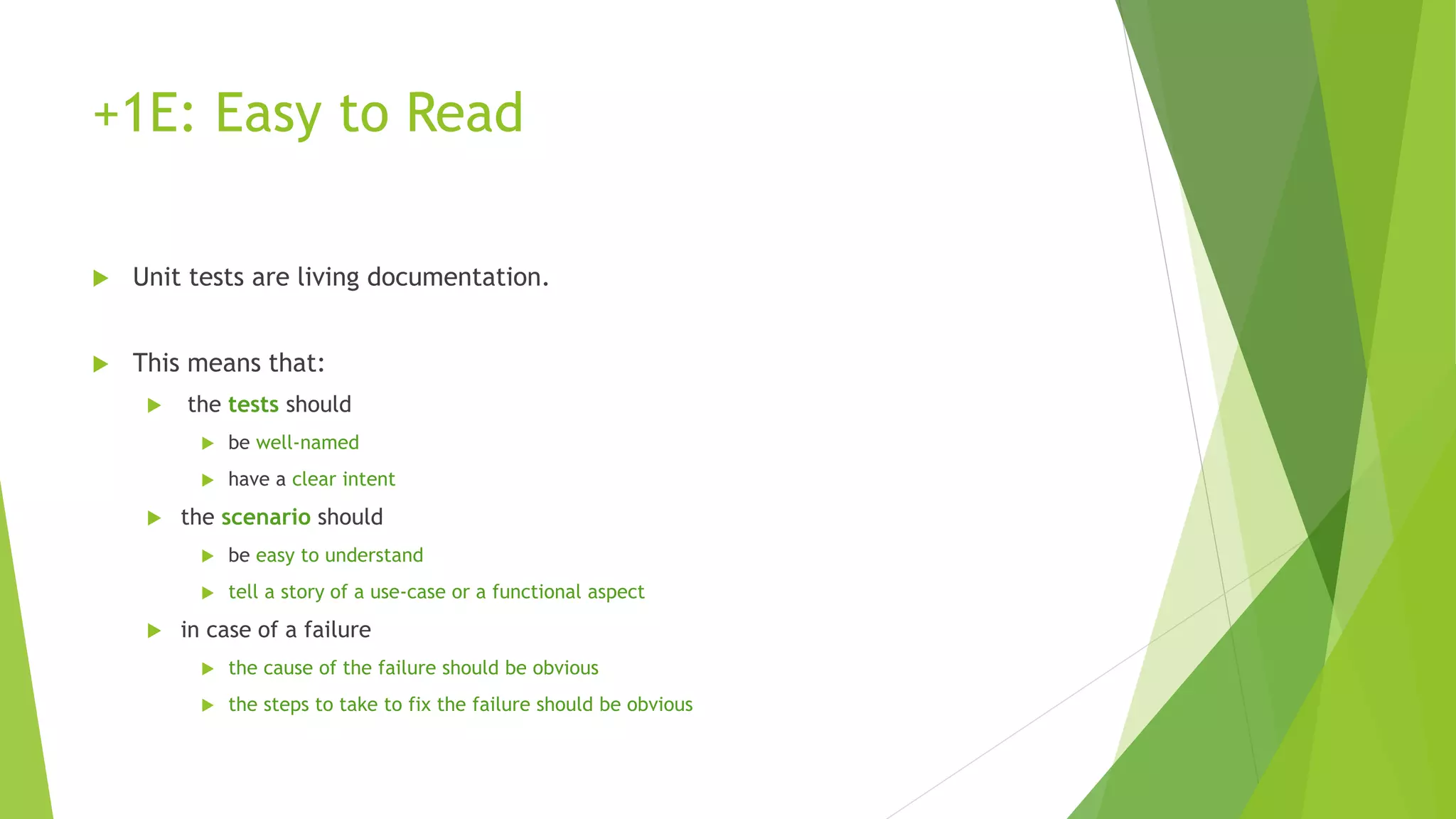
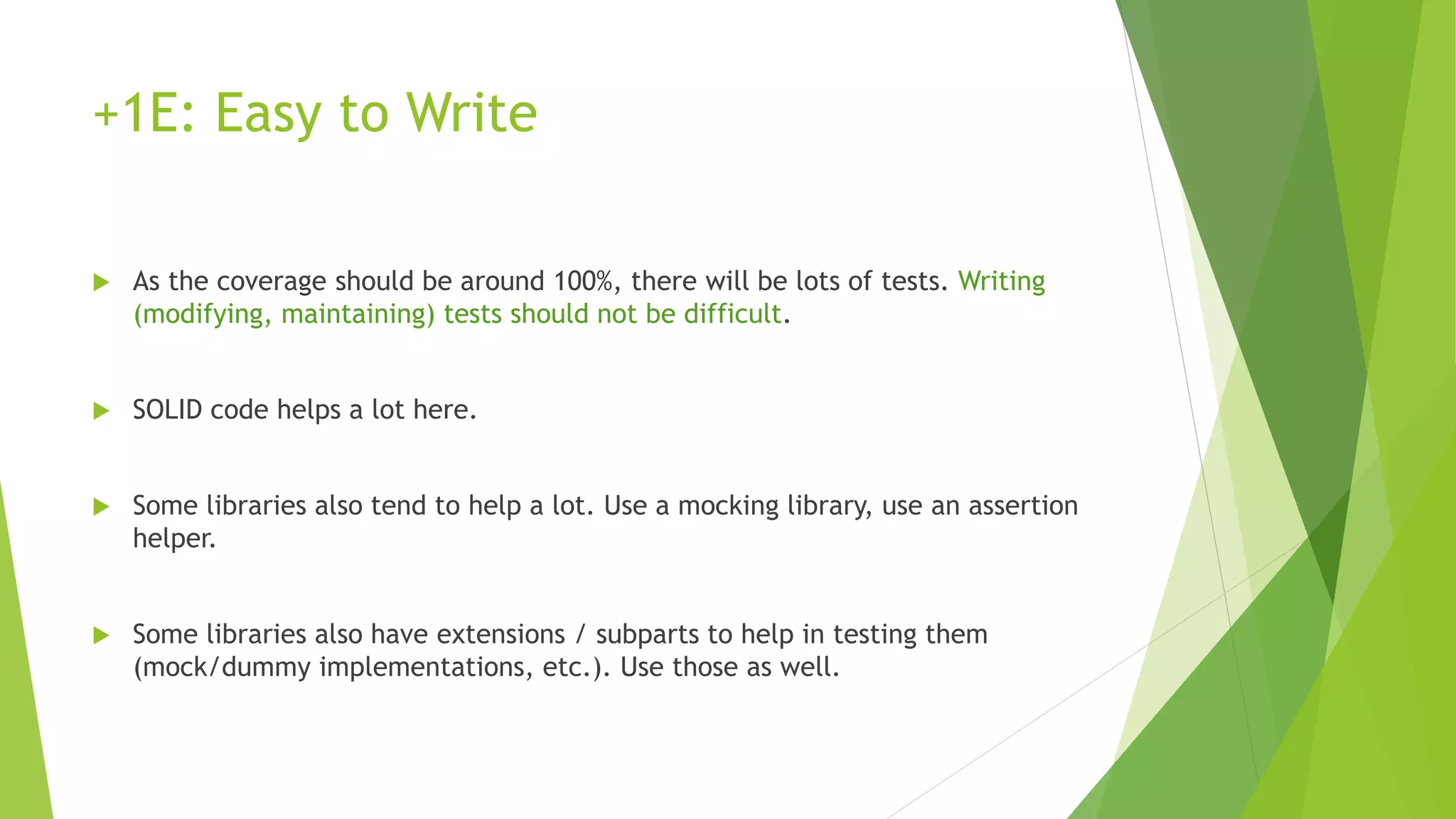
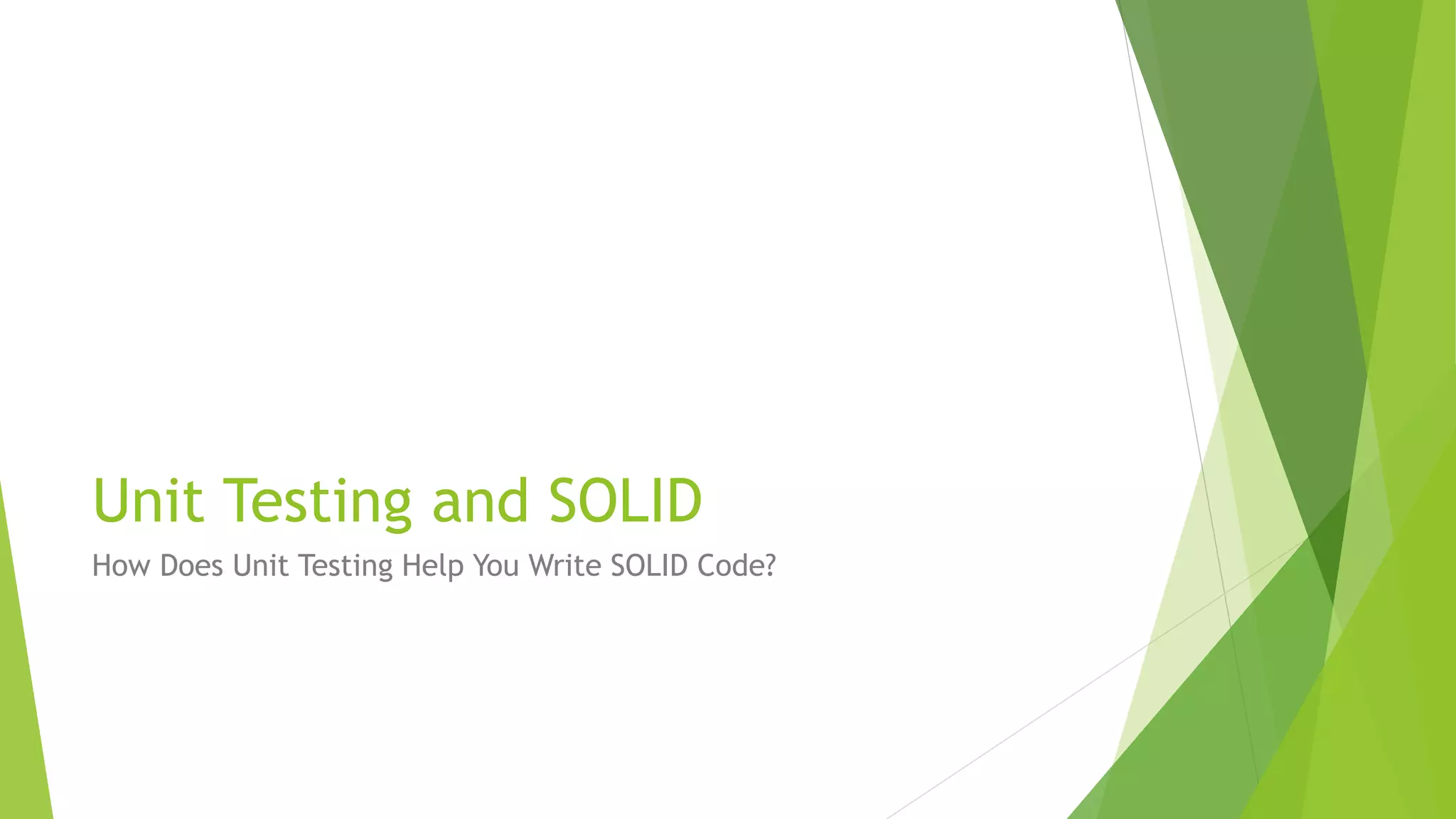
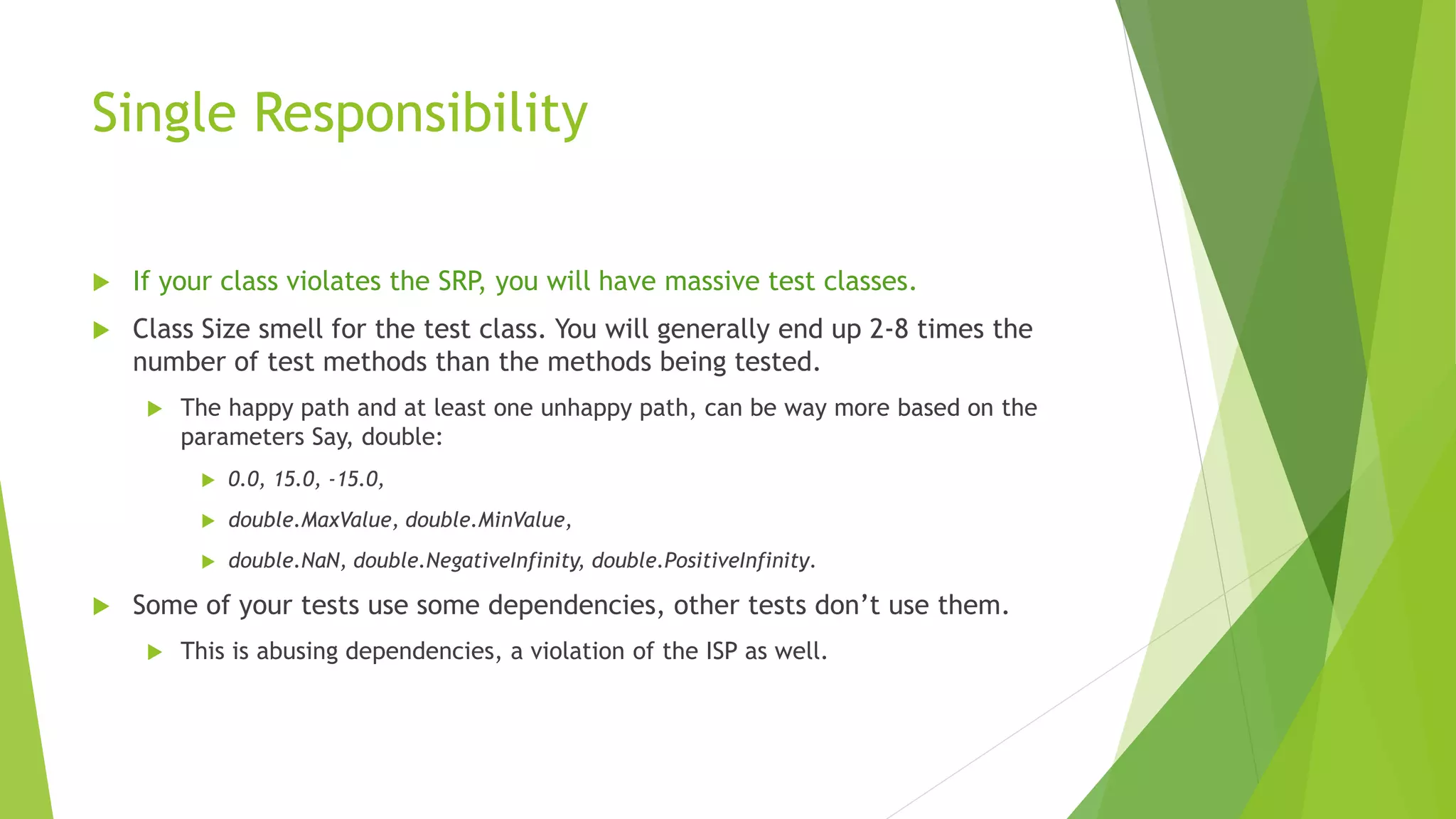
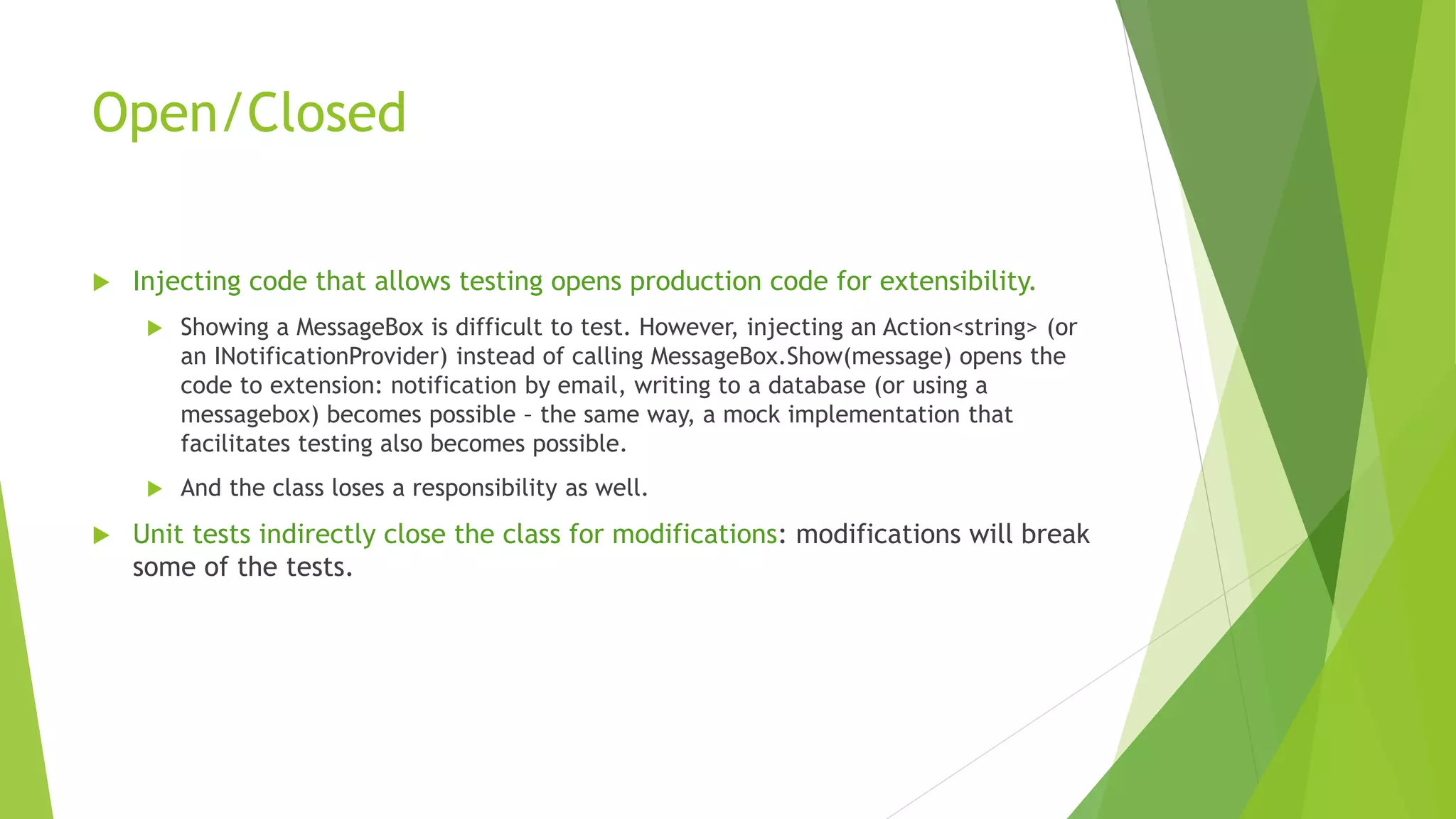
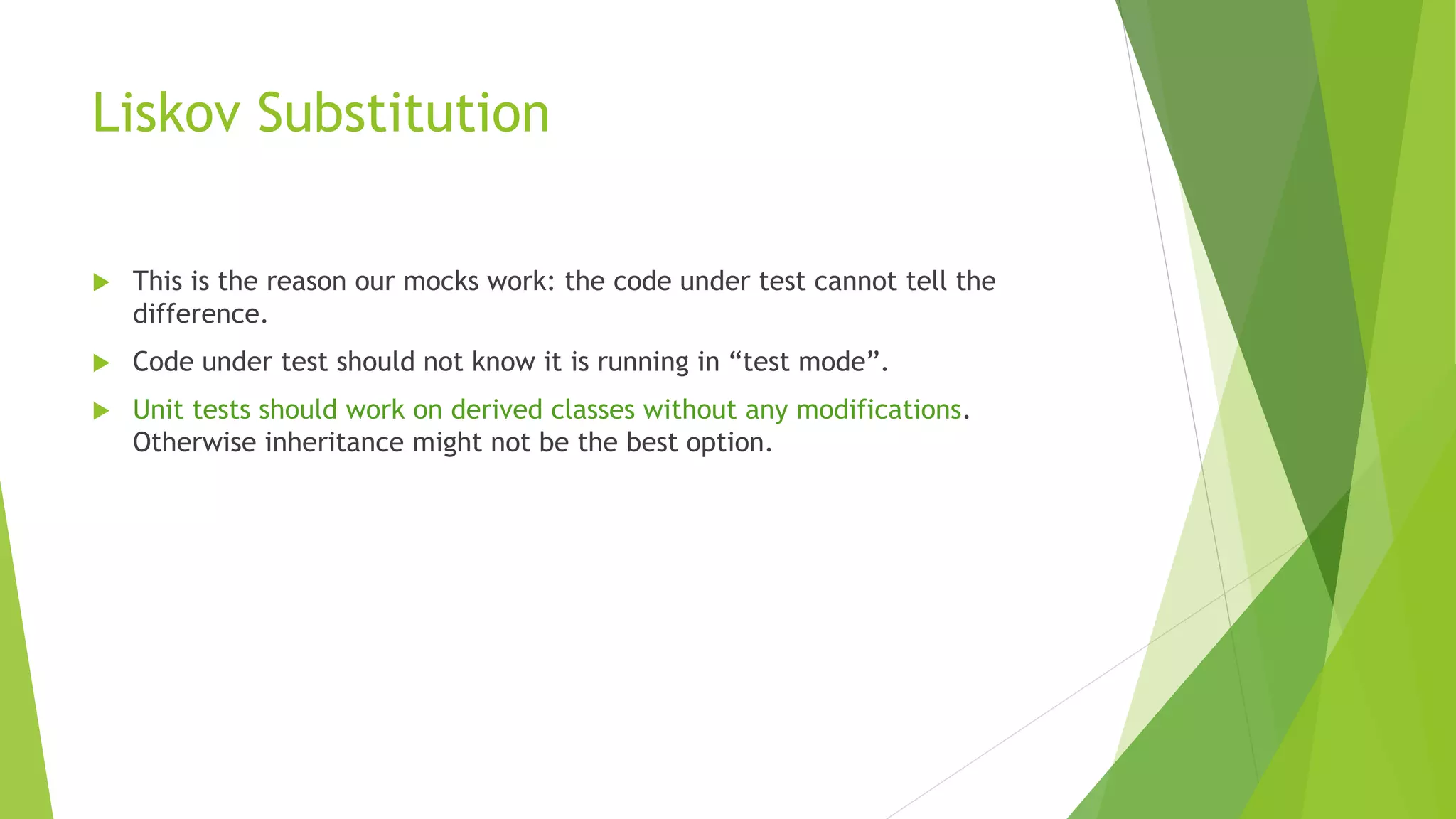
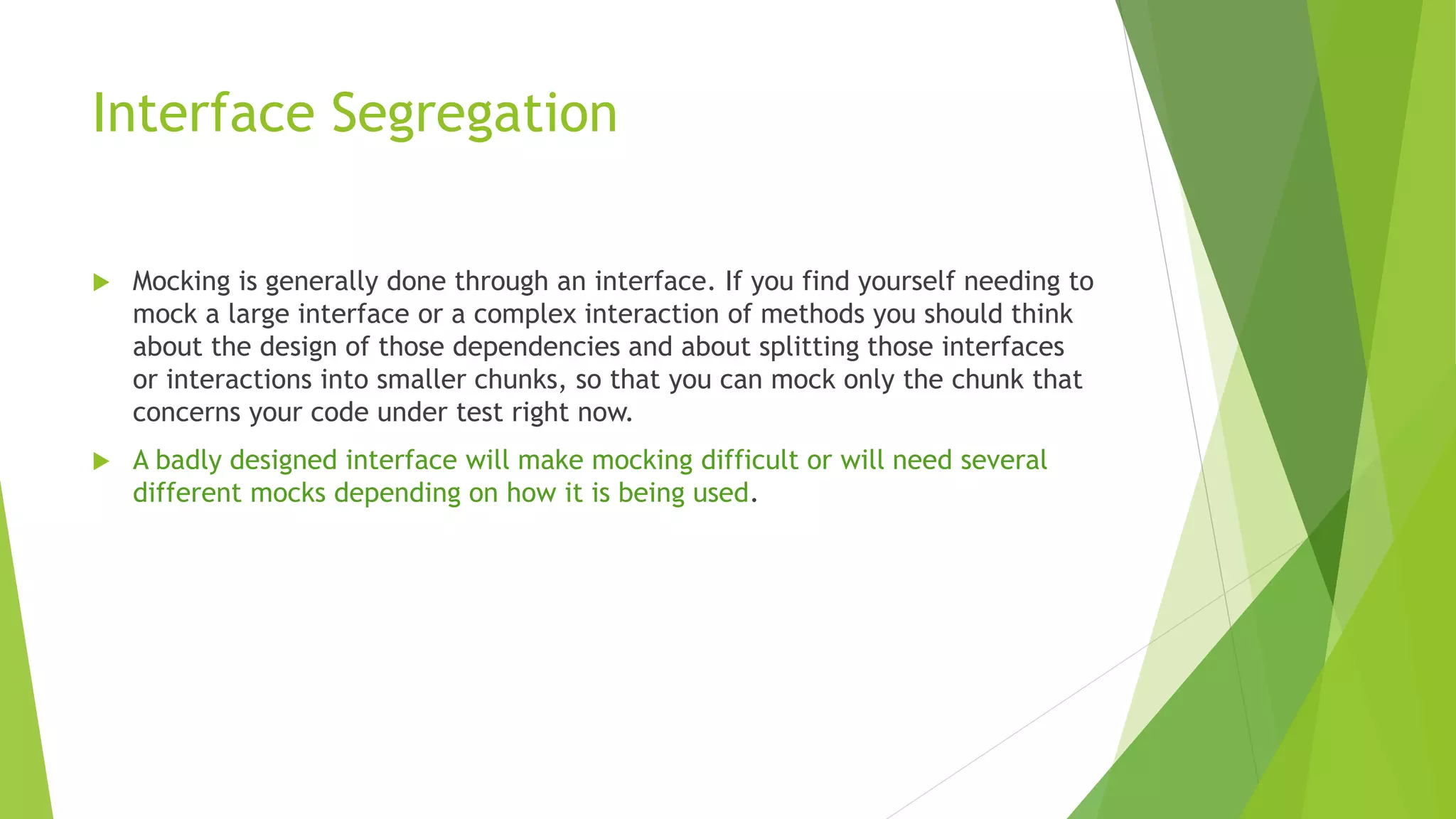
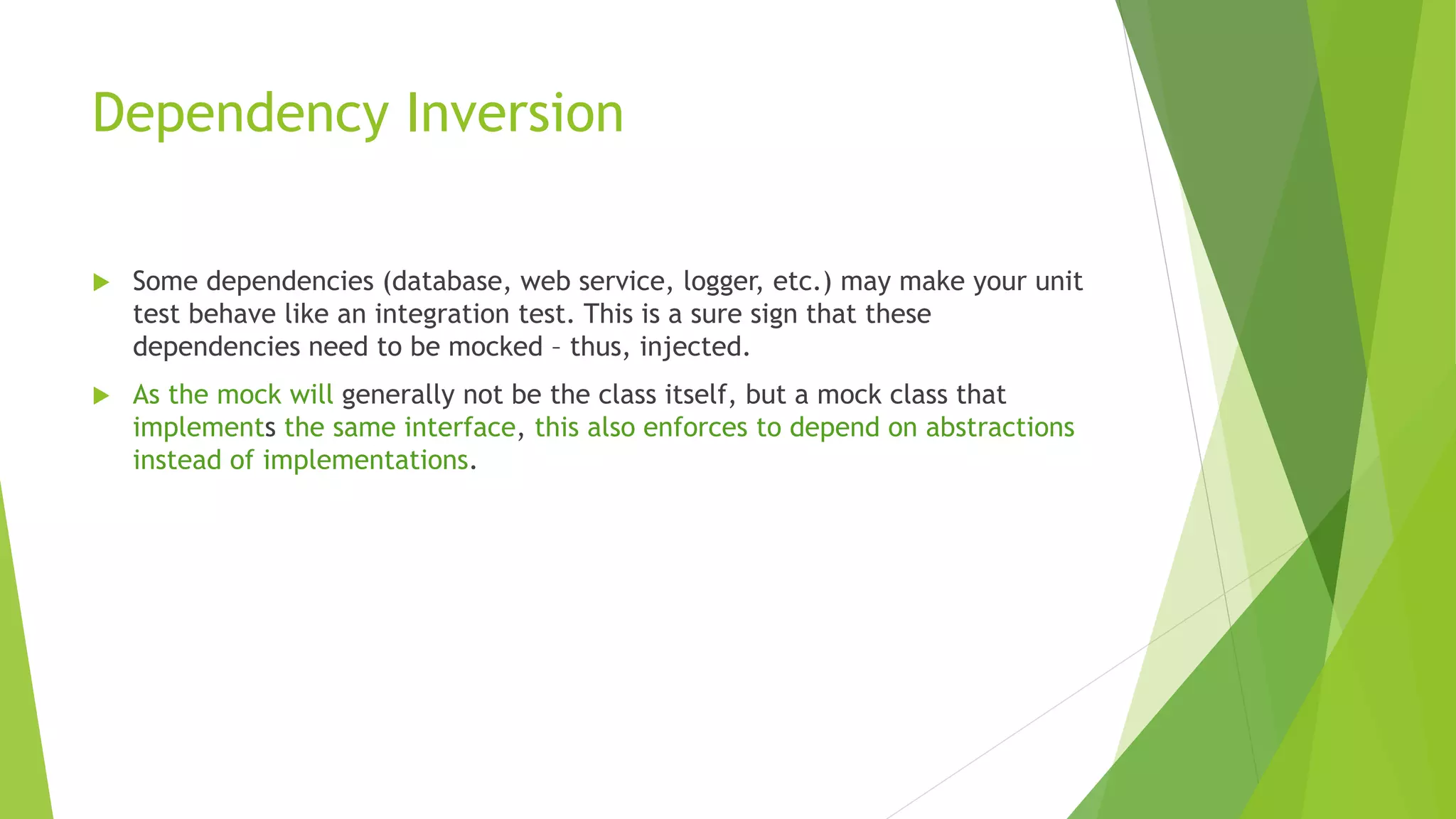

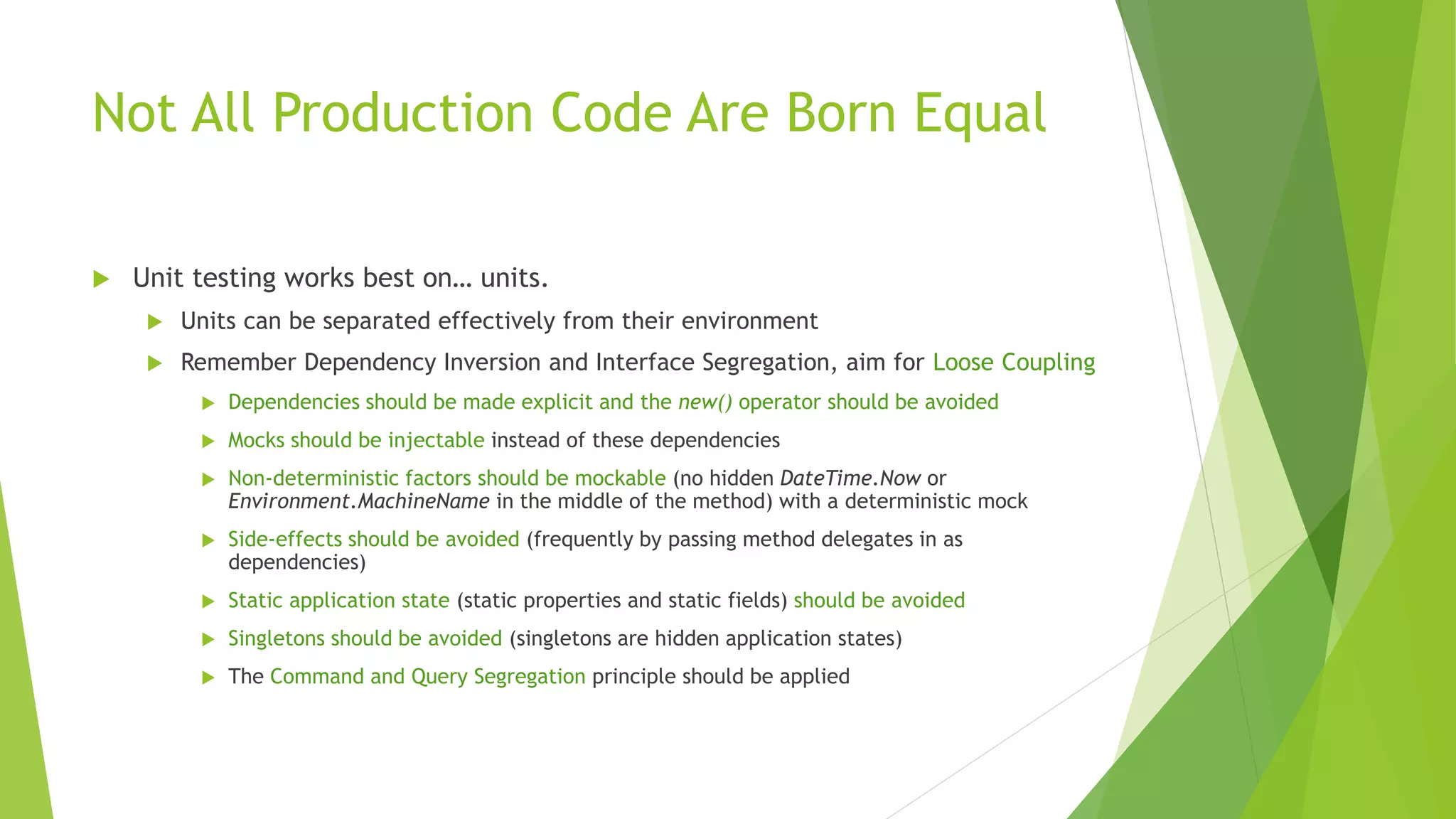
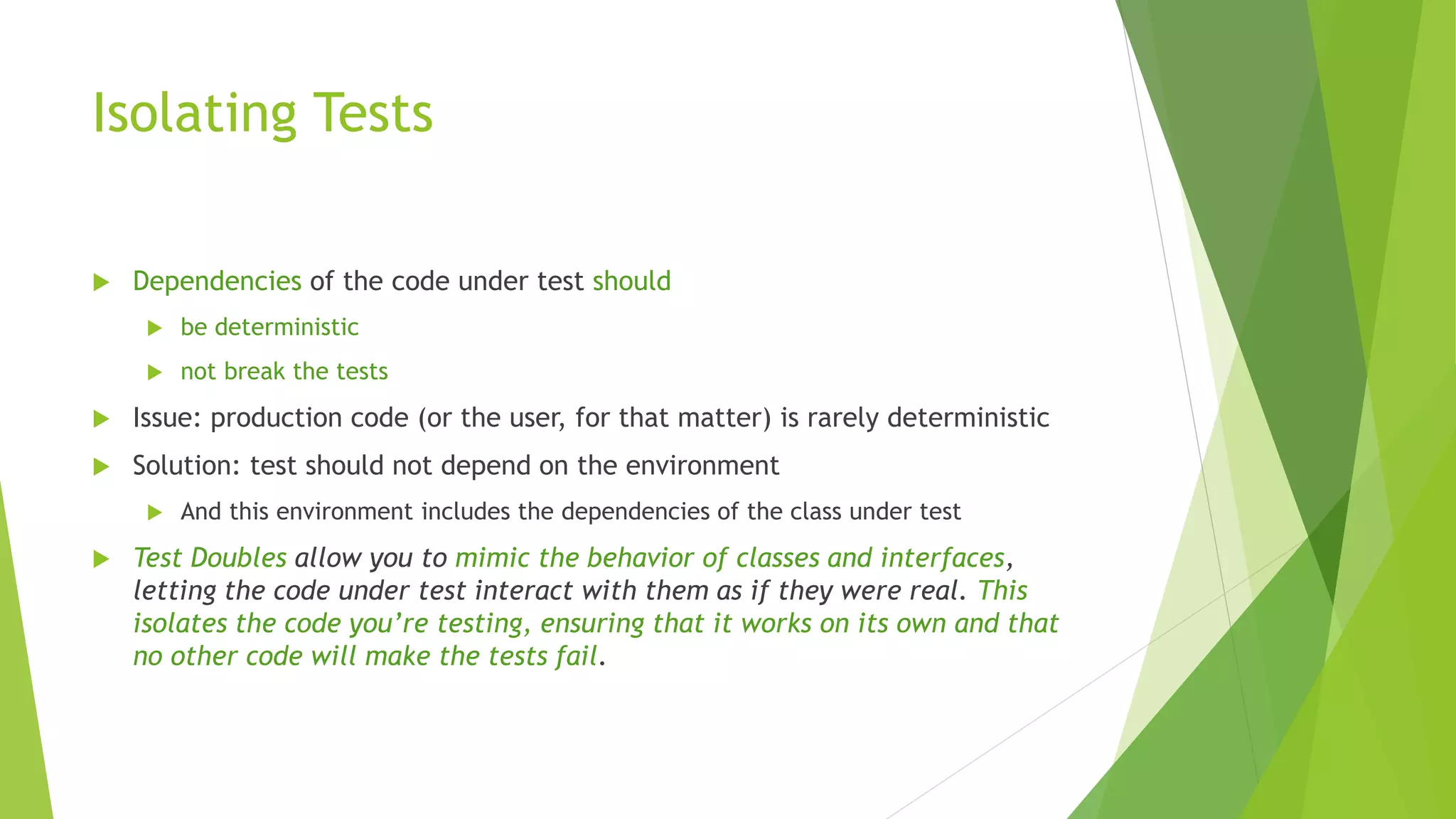
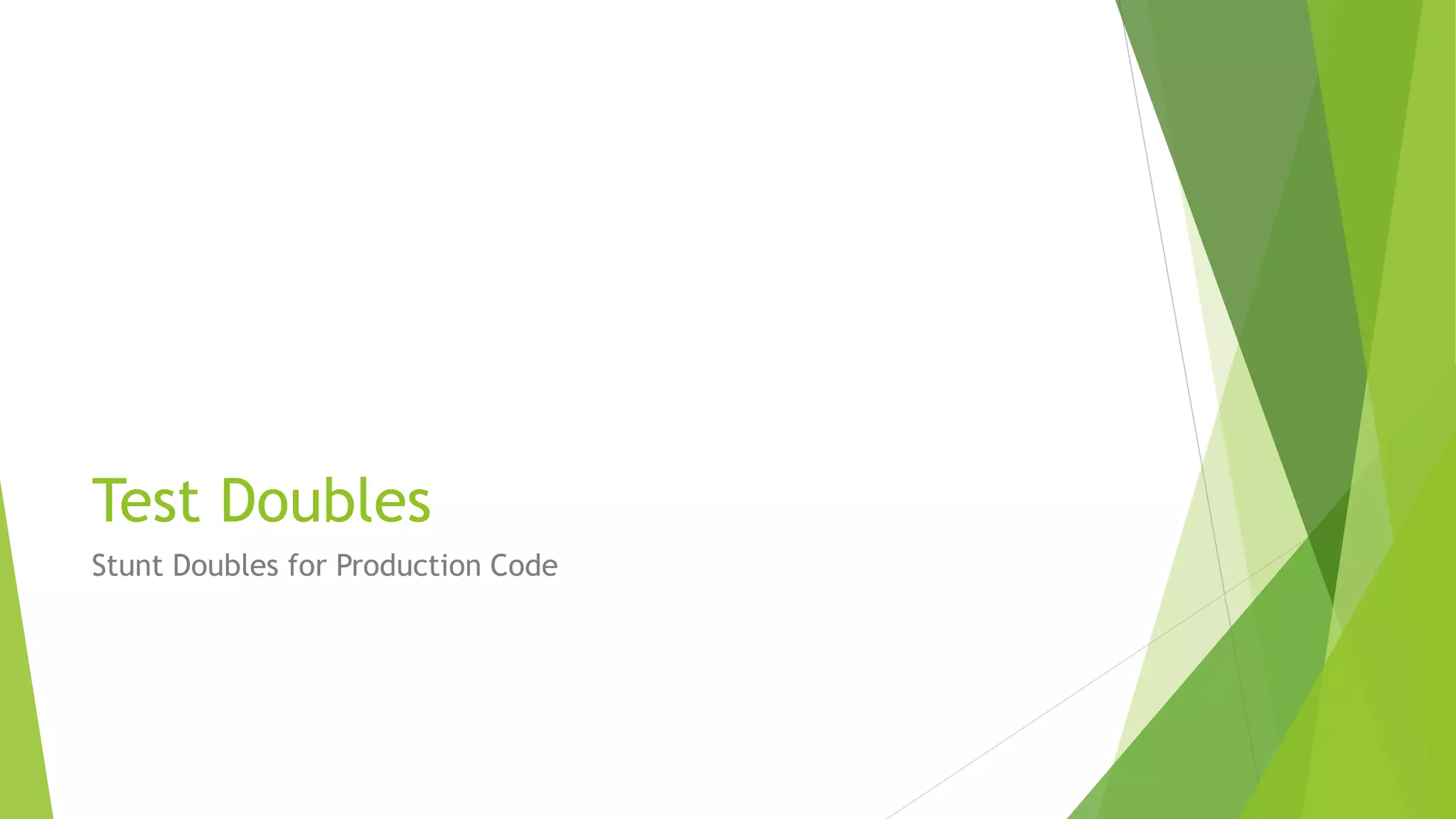
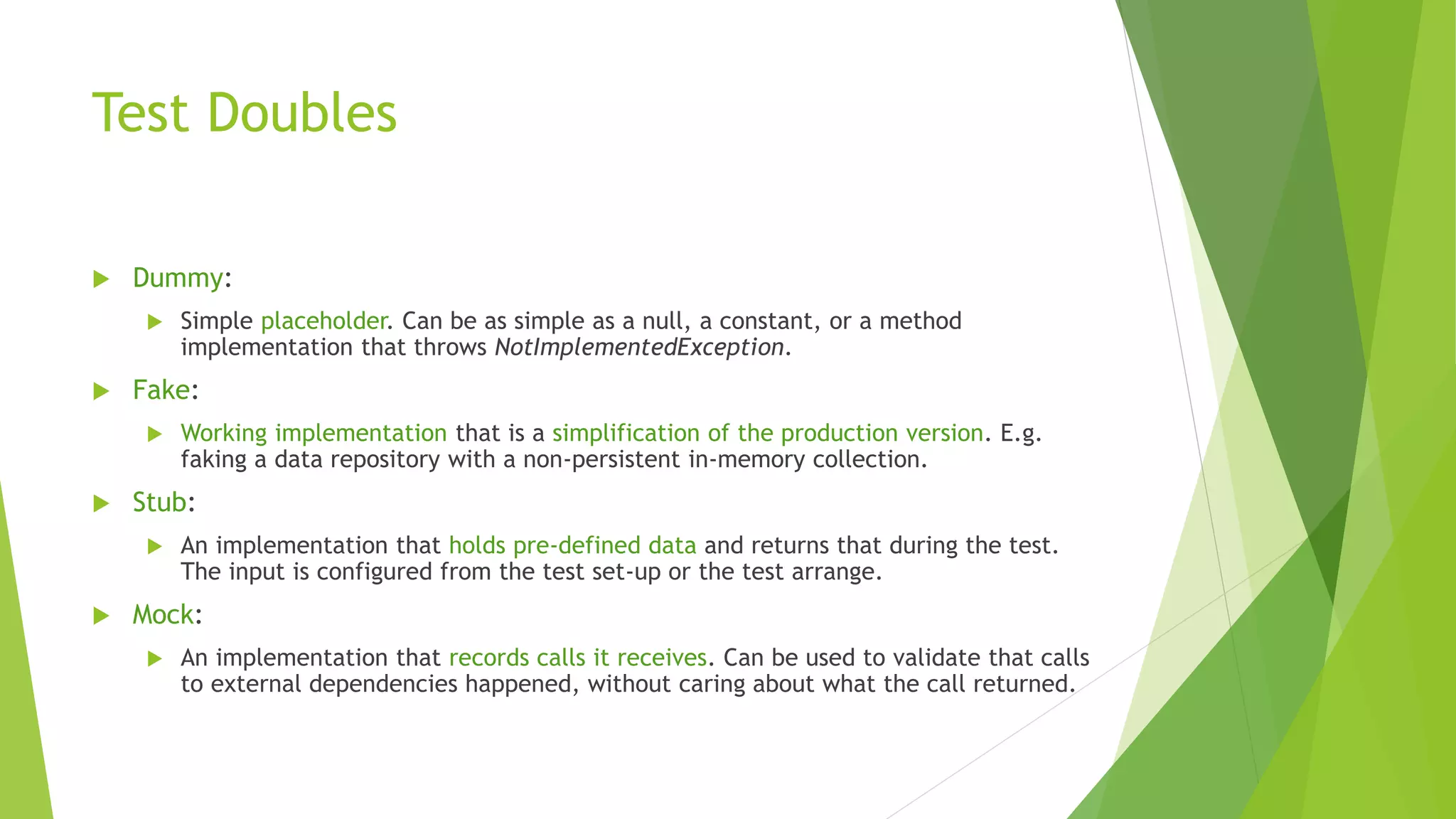
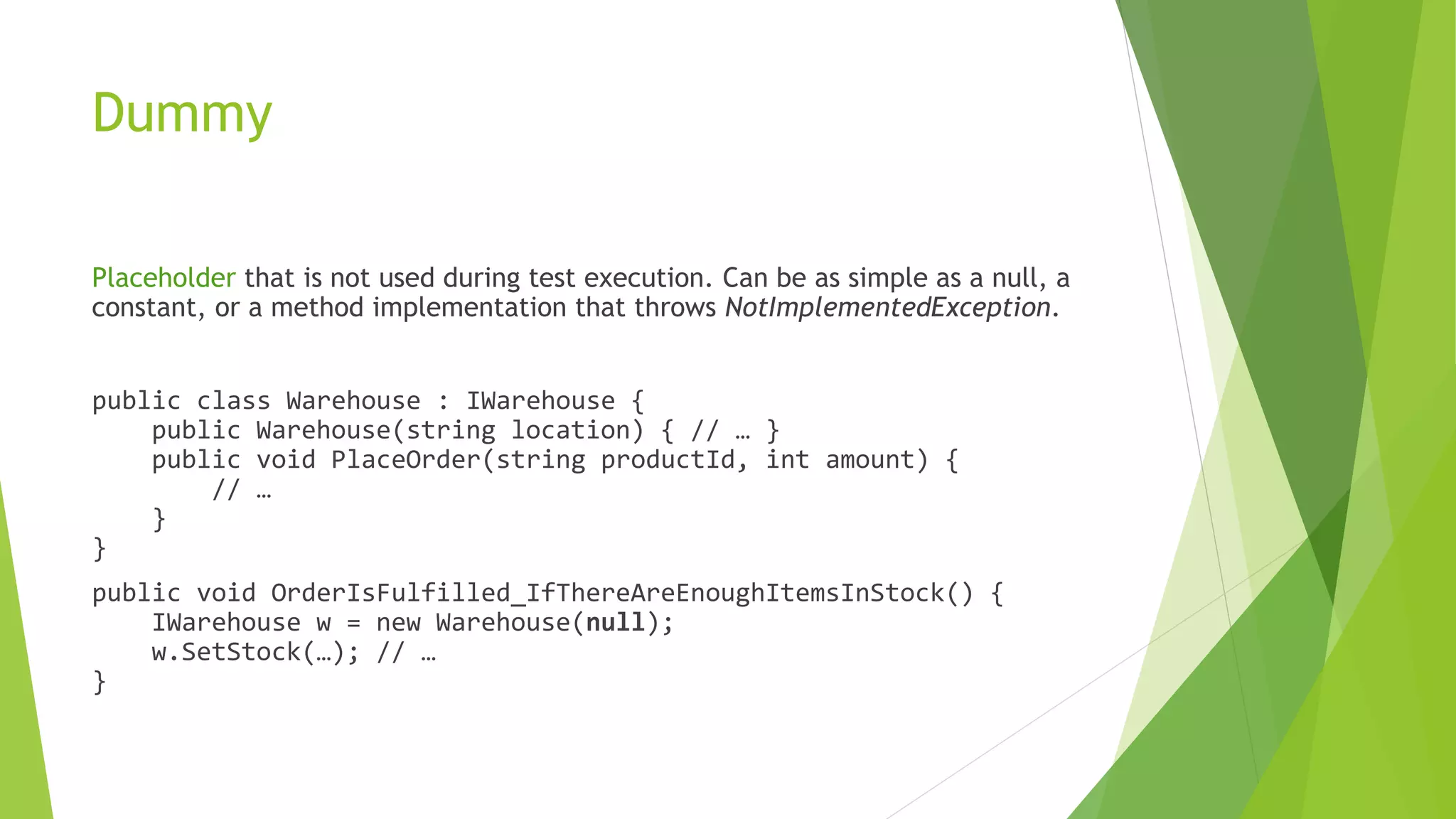
![Fake
Working implementation that is a simplification of the production version.
public class FakeAccountRepository : IAccountRepository {
IDictionary<,> accounts = new Dictionary<IUser, IAccount> {
{ new User(“john@mail.com”), new UserAccount() },
{ new User(“bob@xmail.com”), new UserAccount() }
}
public bool IsPasswordValid(User user, string pw) {
return pw == accounts[user].GetPasswordHash();
}
}](https://image.slidesharecdn.com/tddbestpractices-180730164557/75/TDD-Best-Practices-45-2048.jpg)
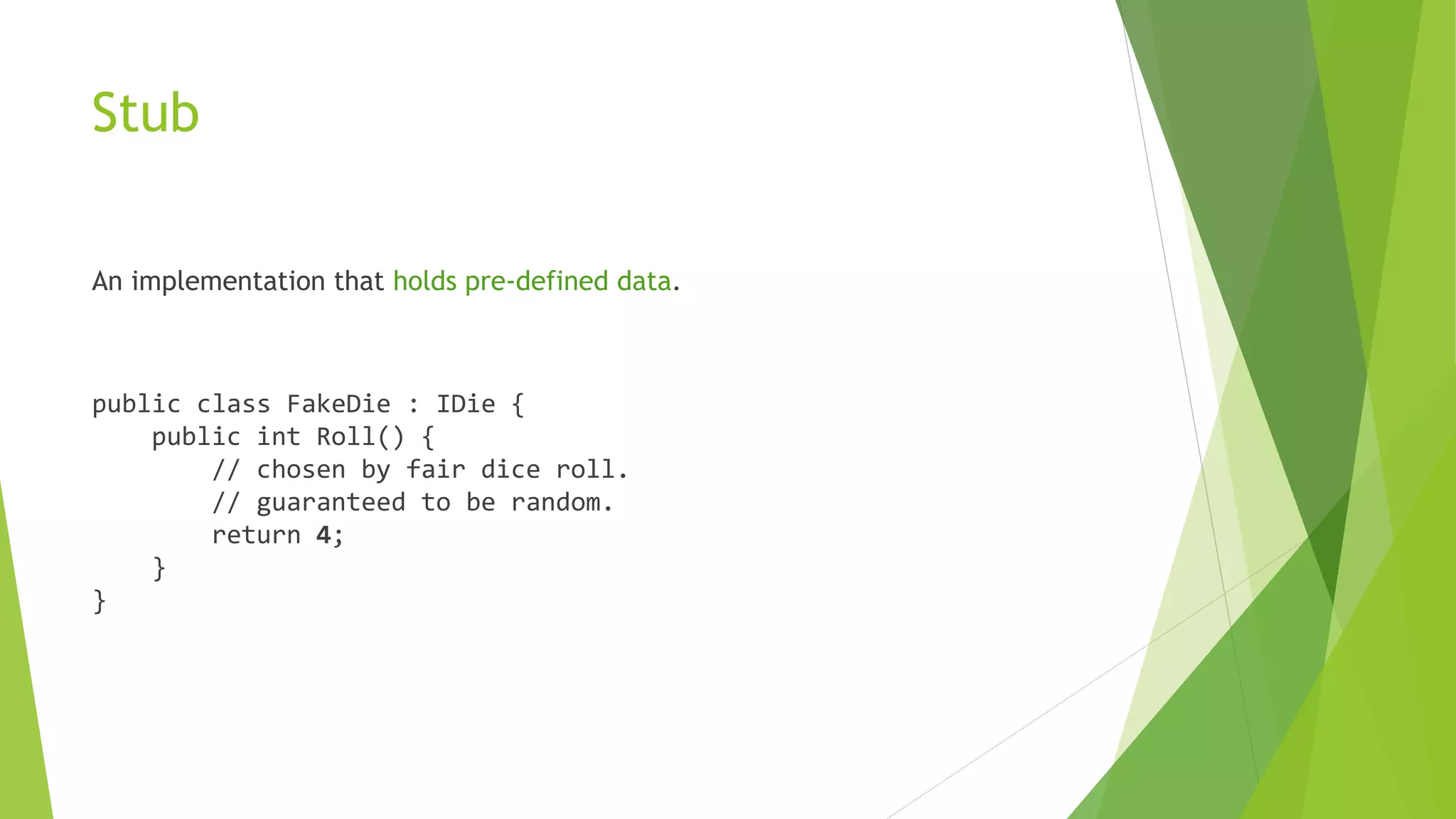
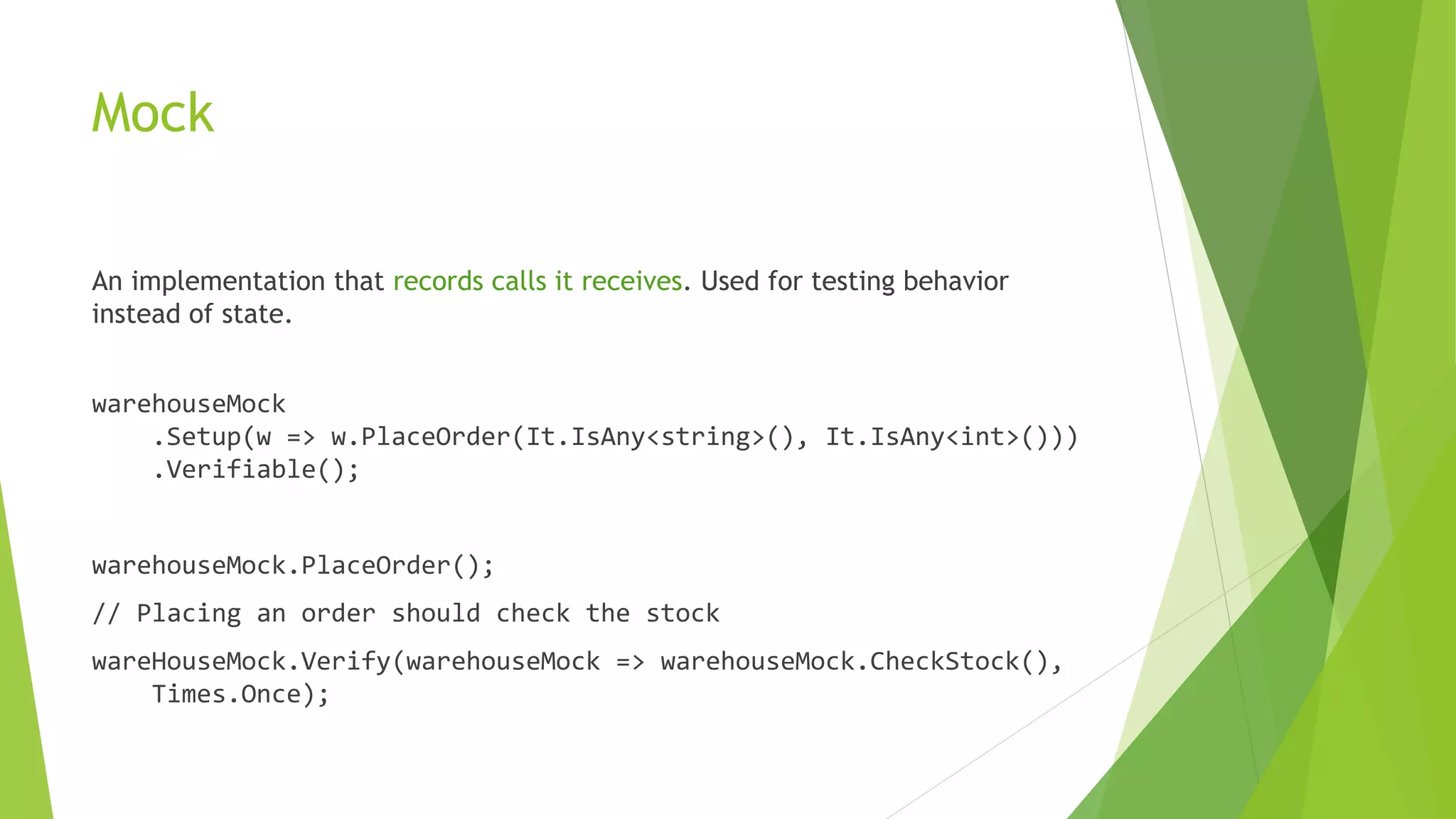
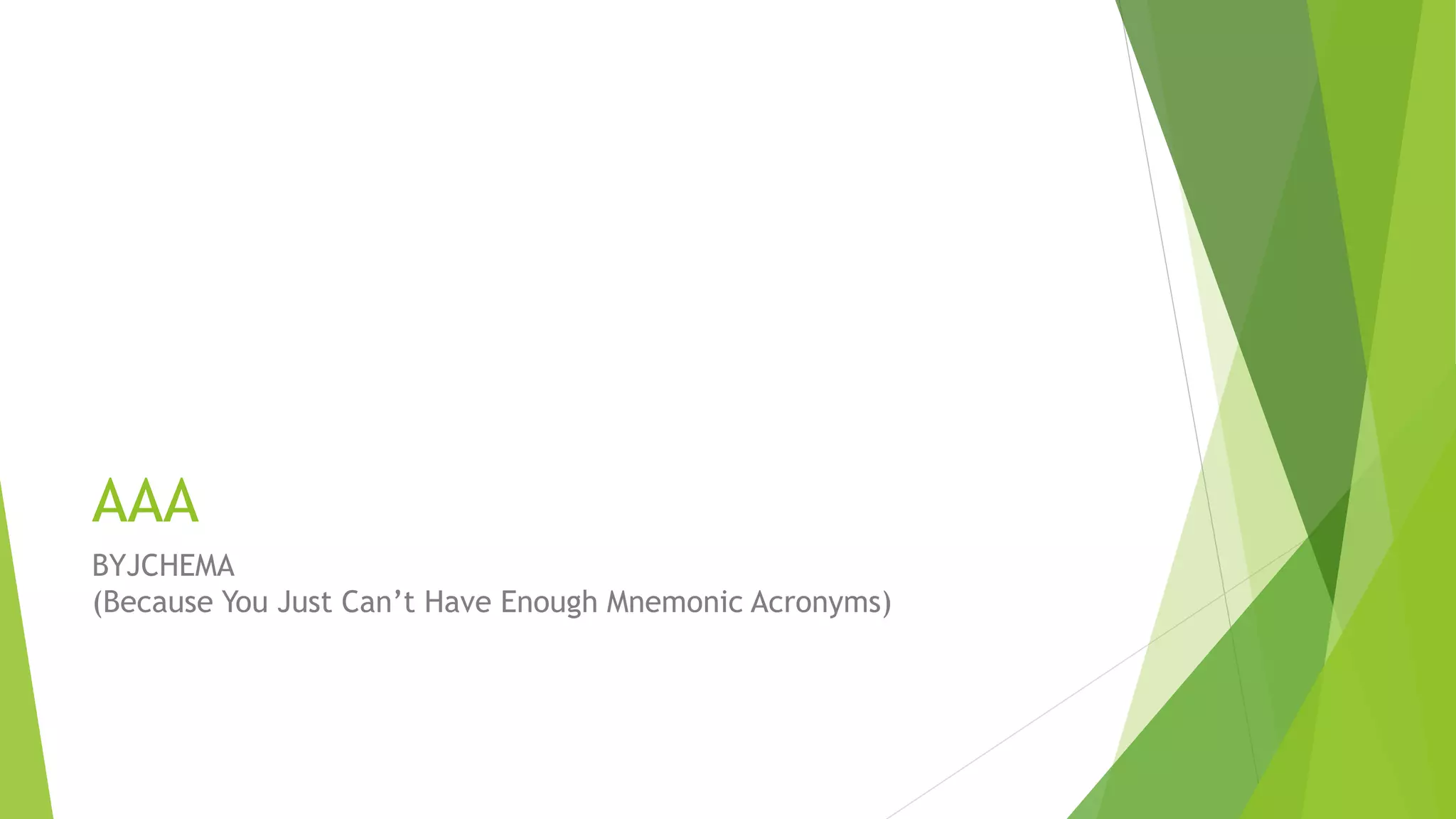
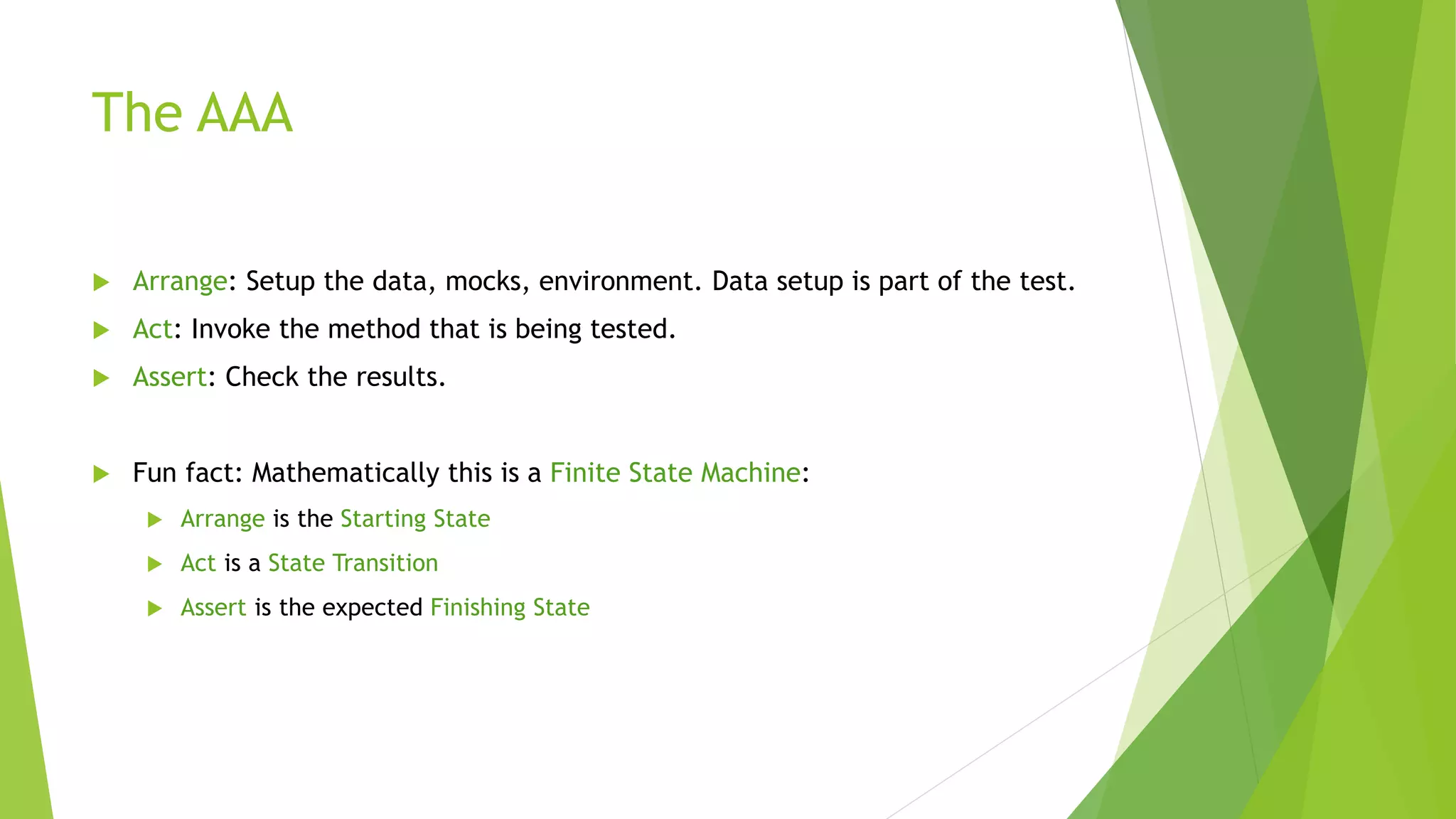
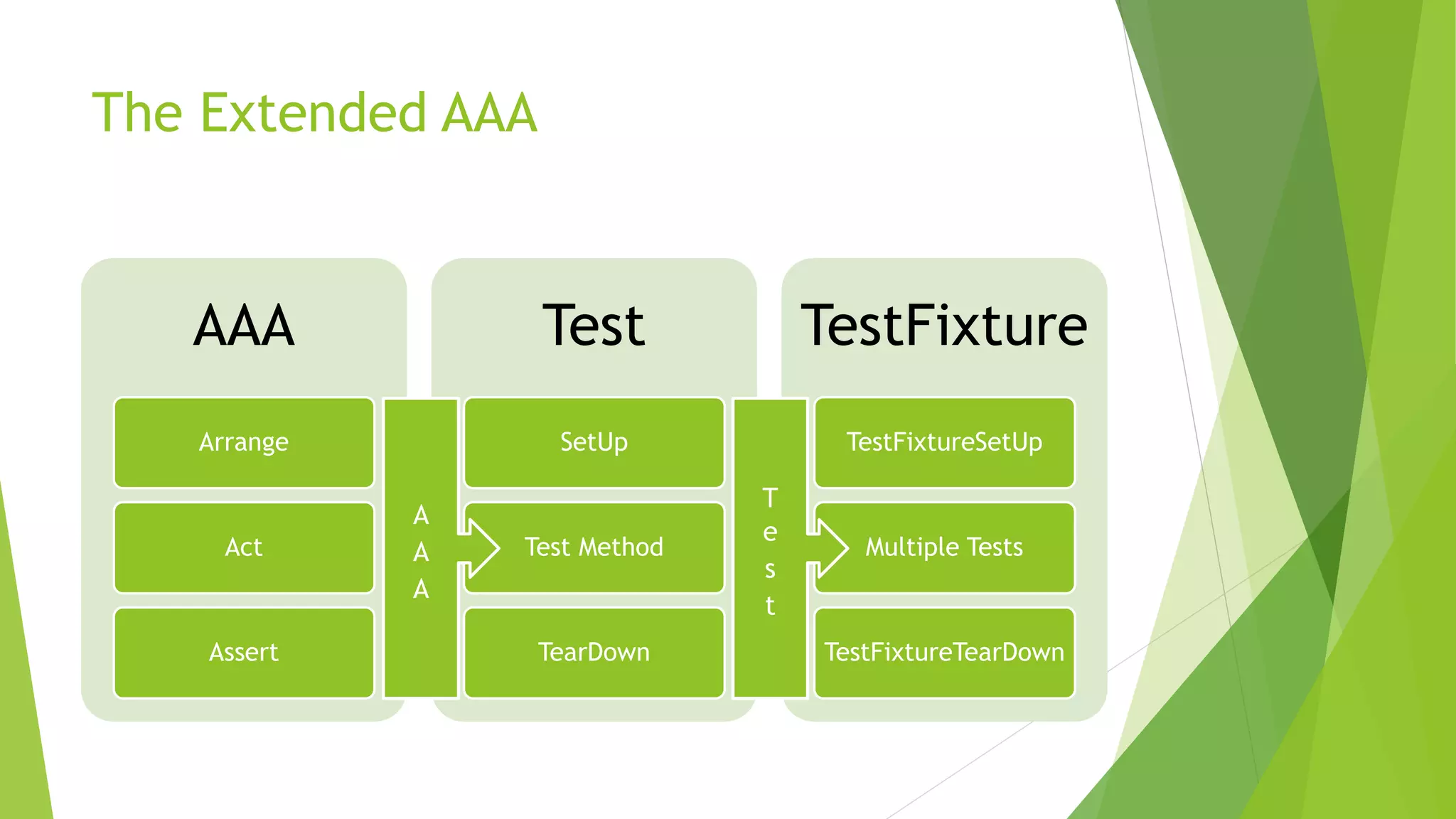
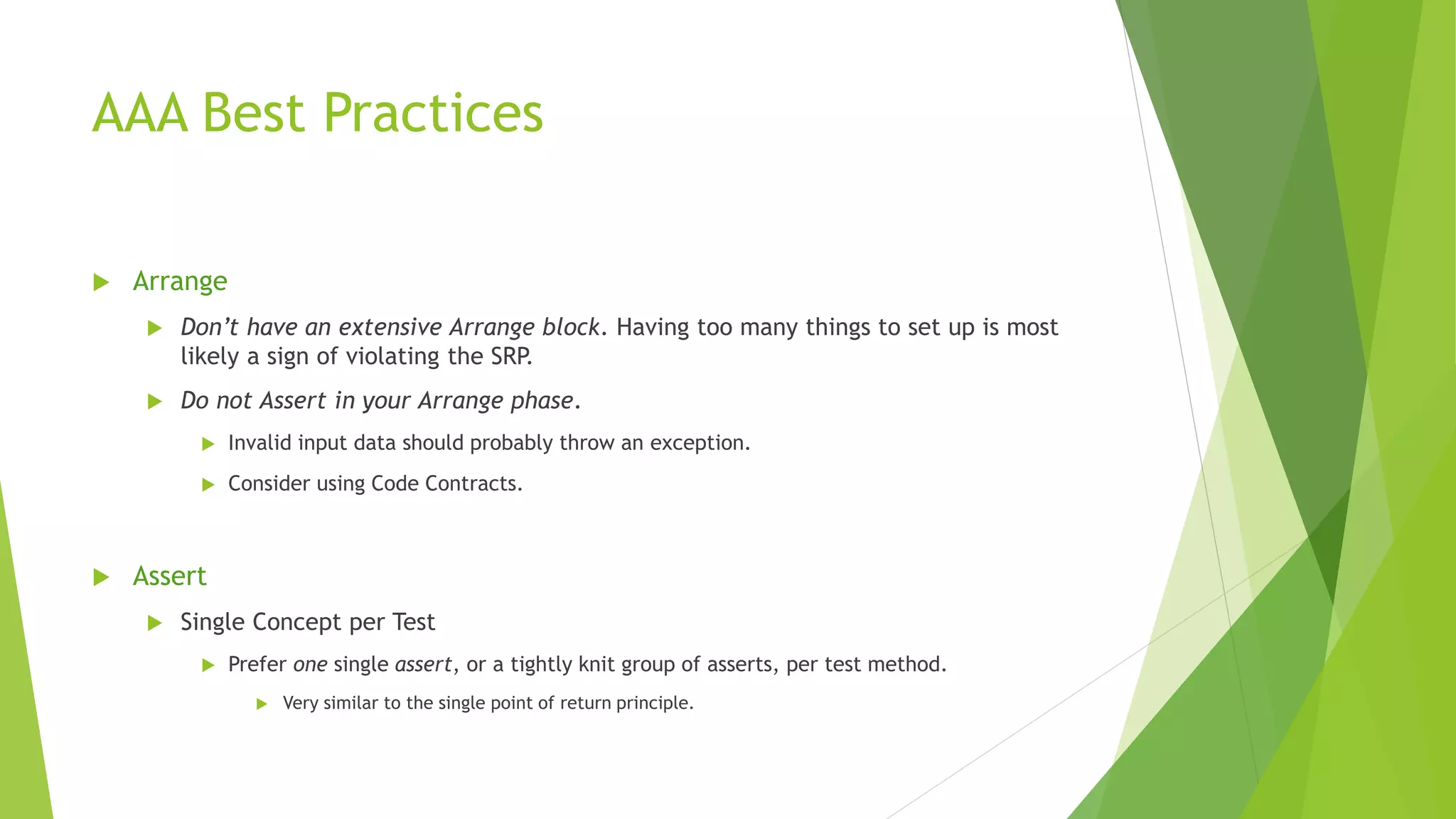
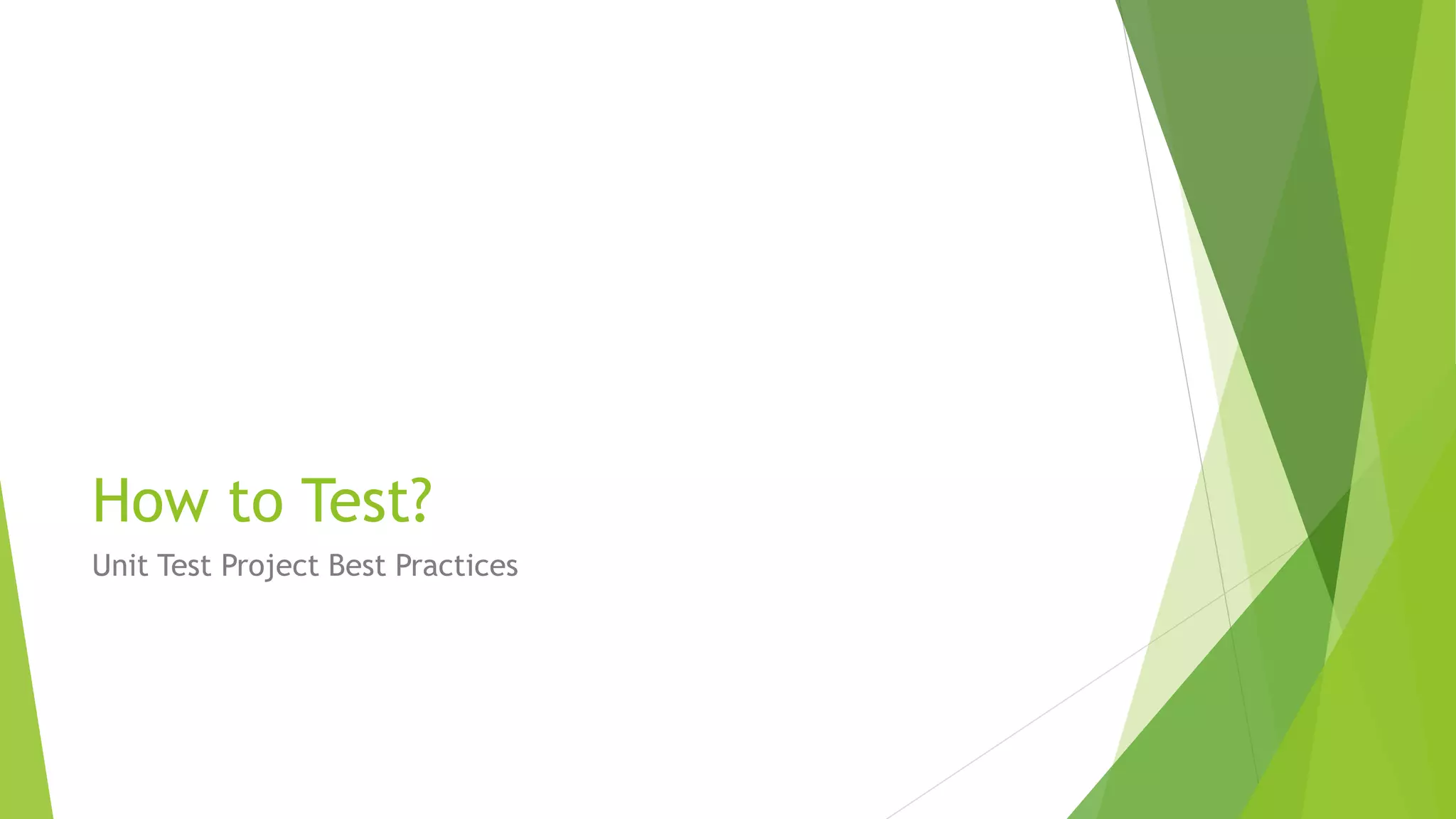

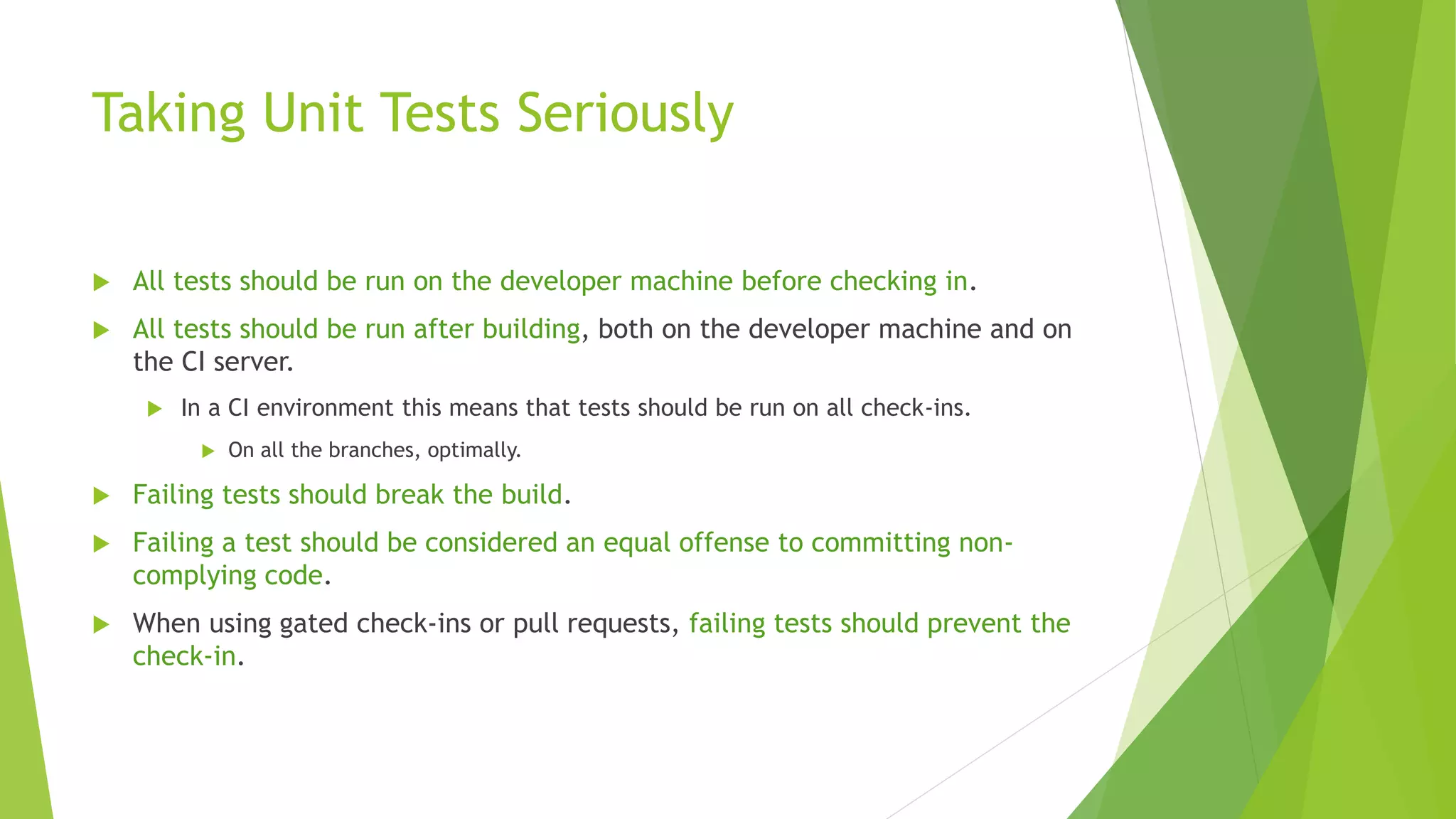
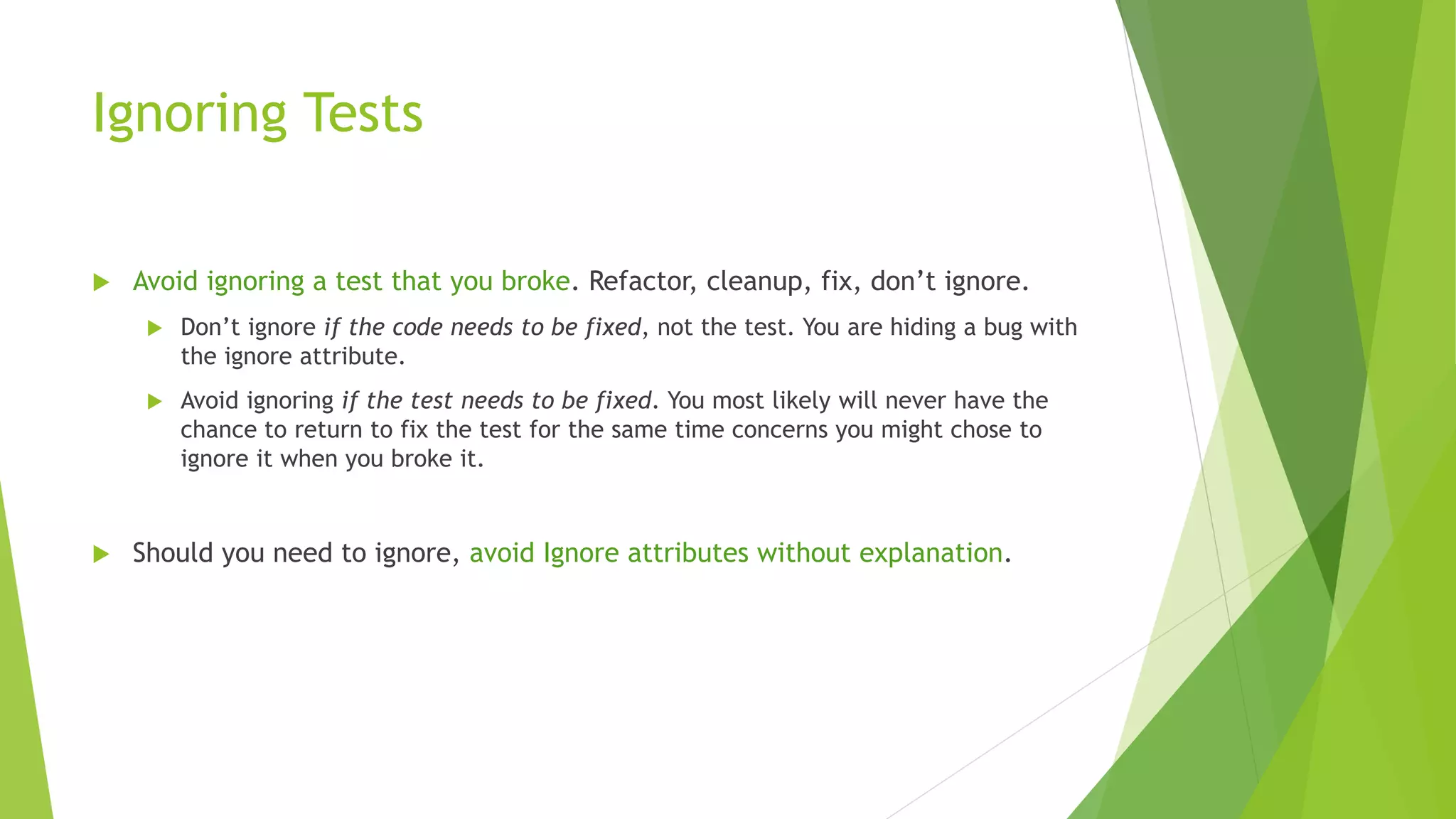
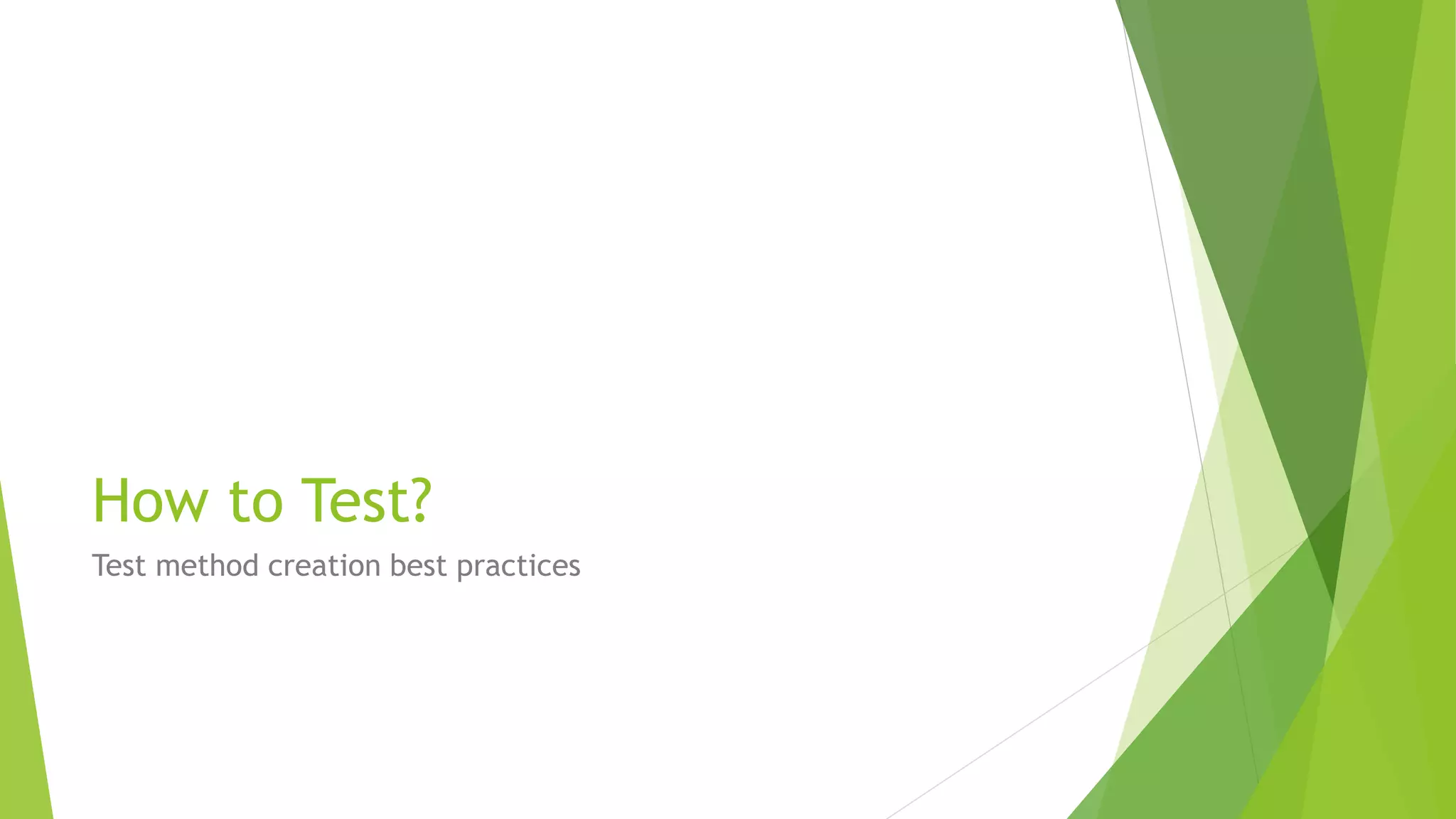
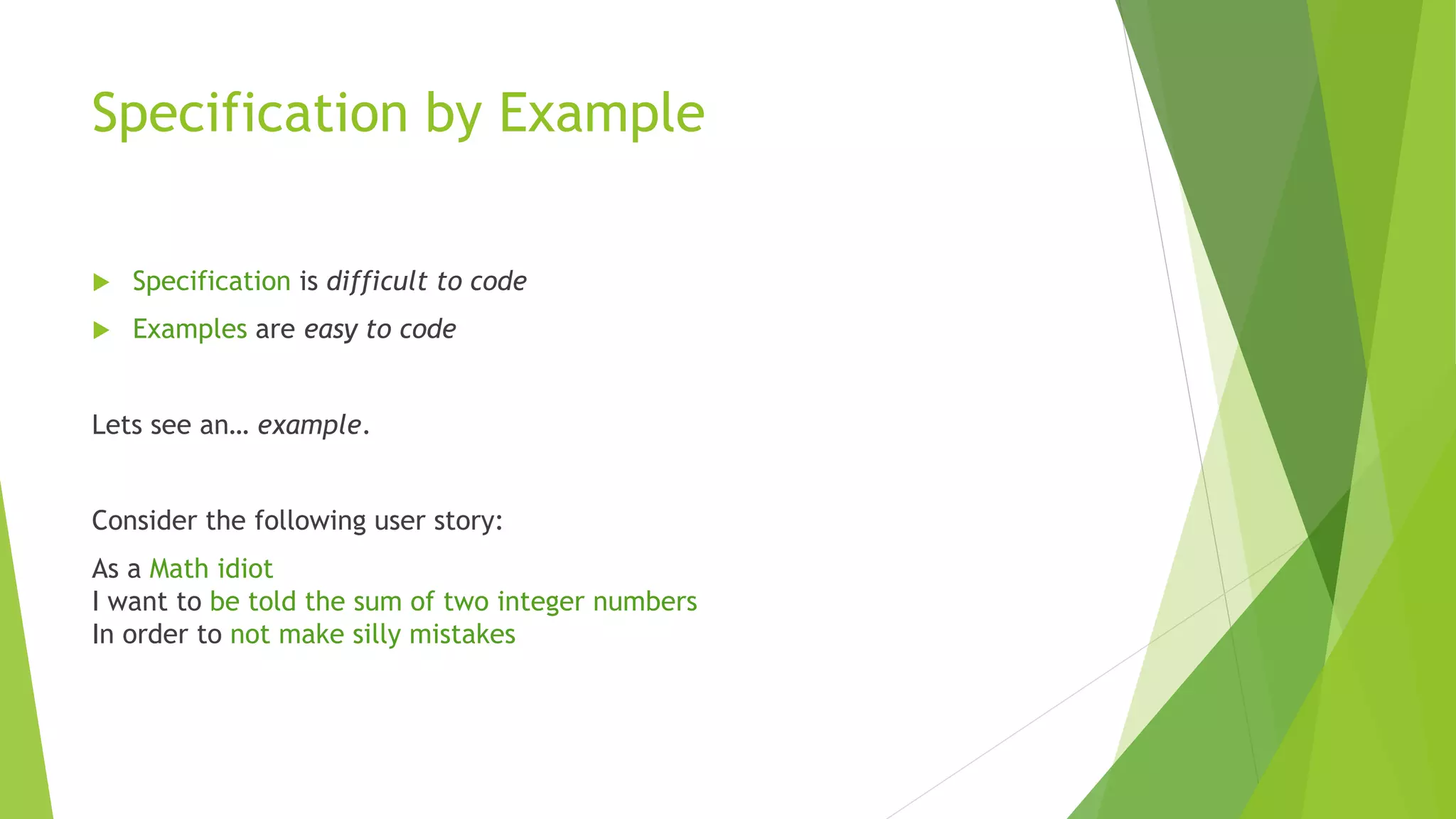
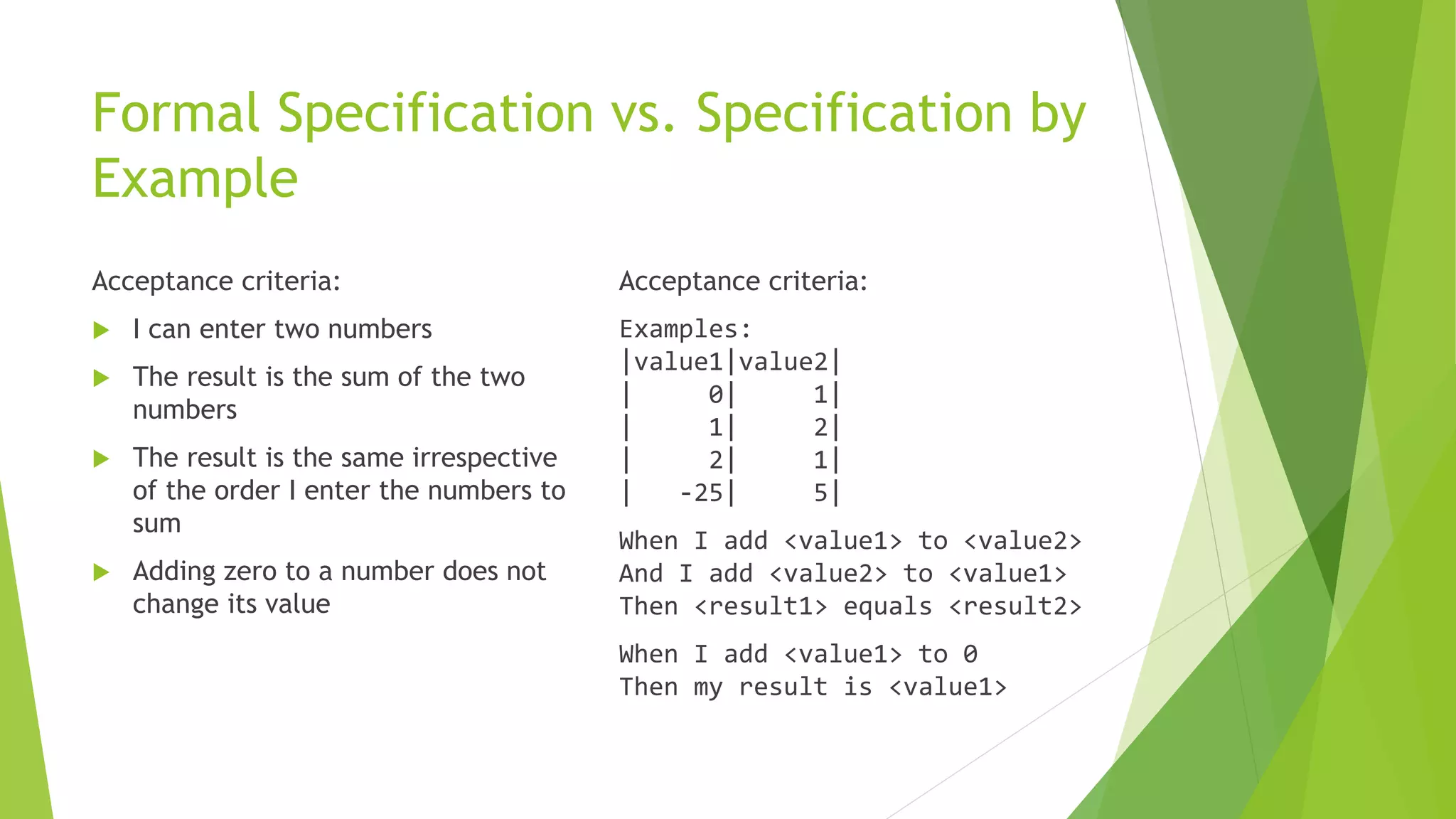
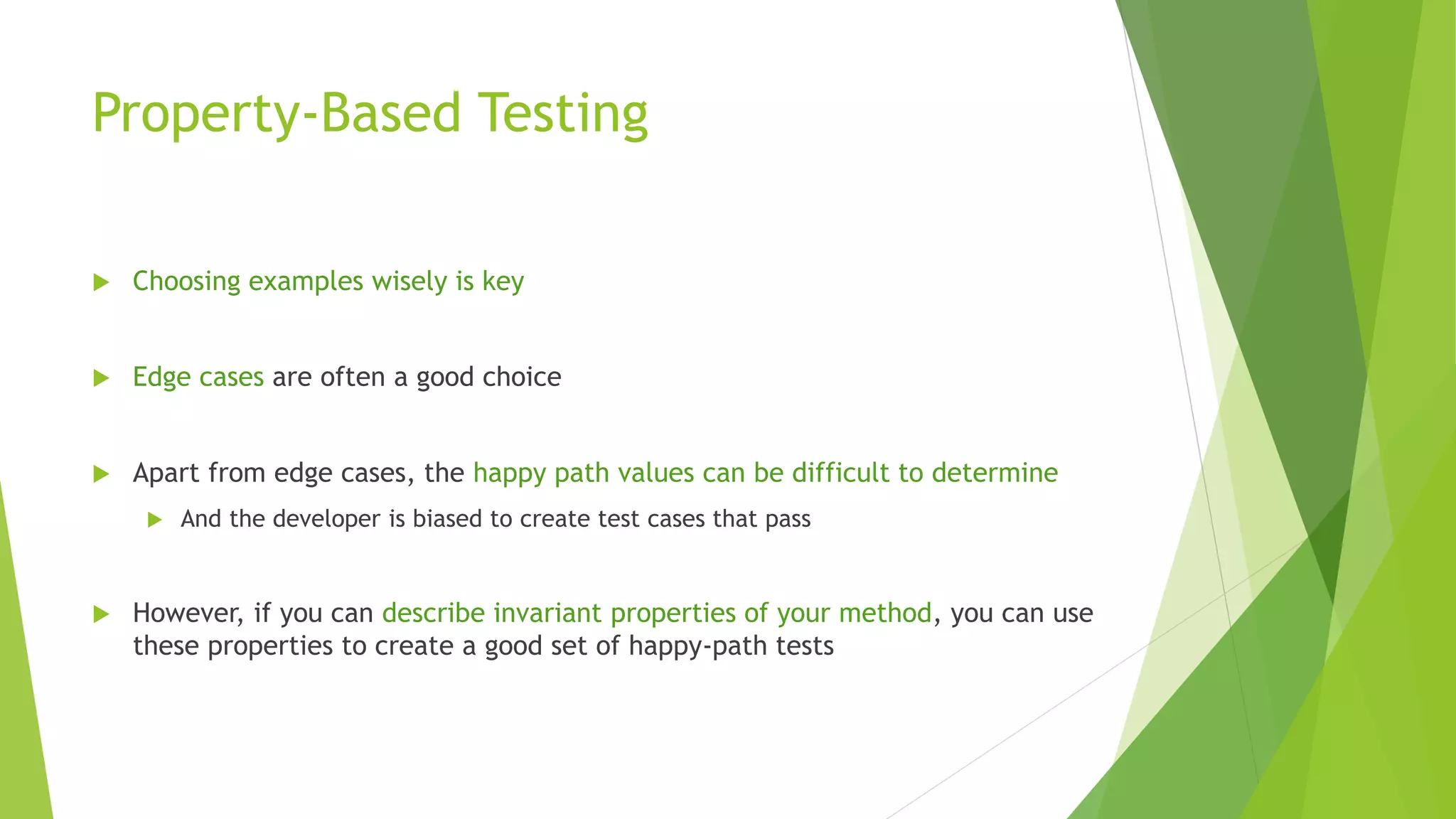
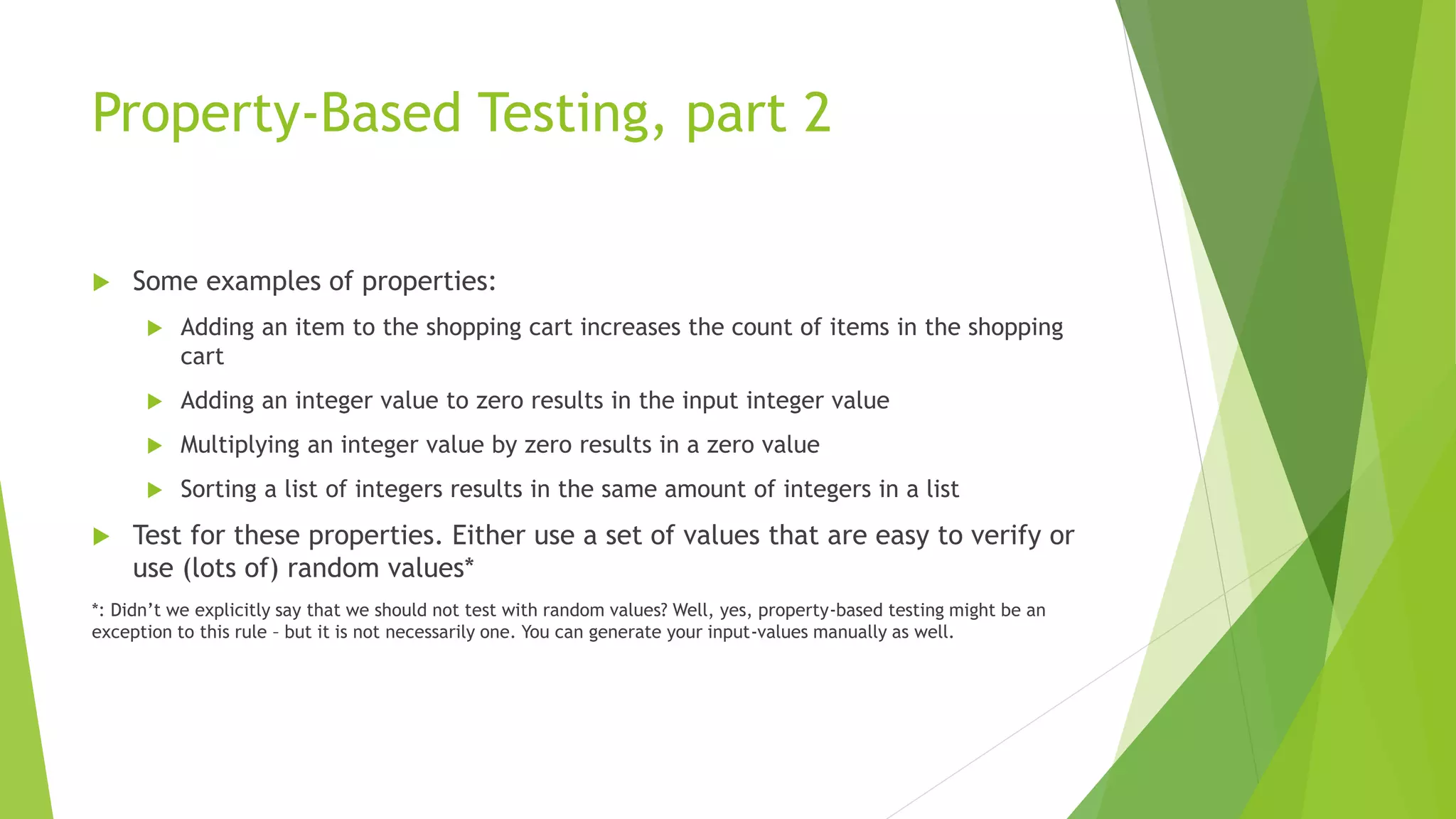

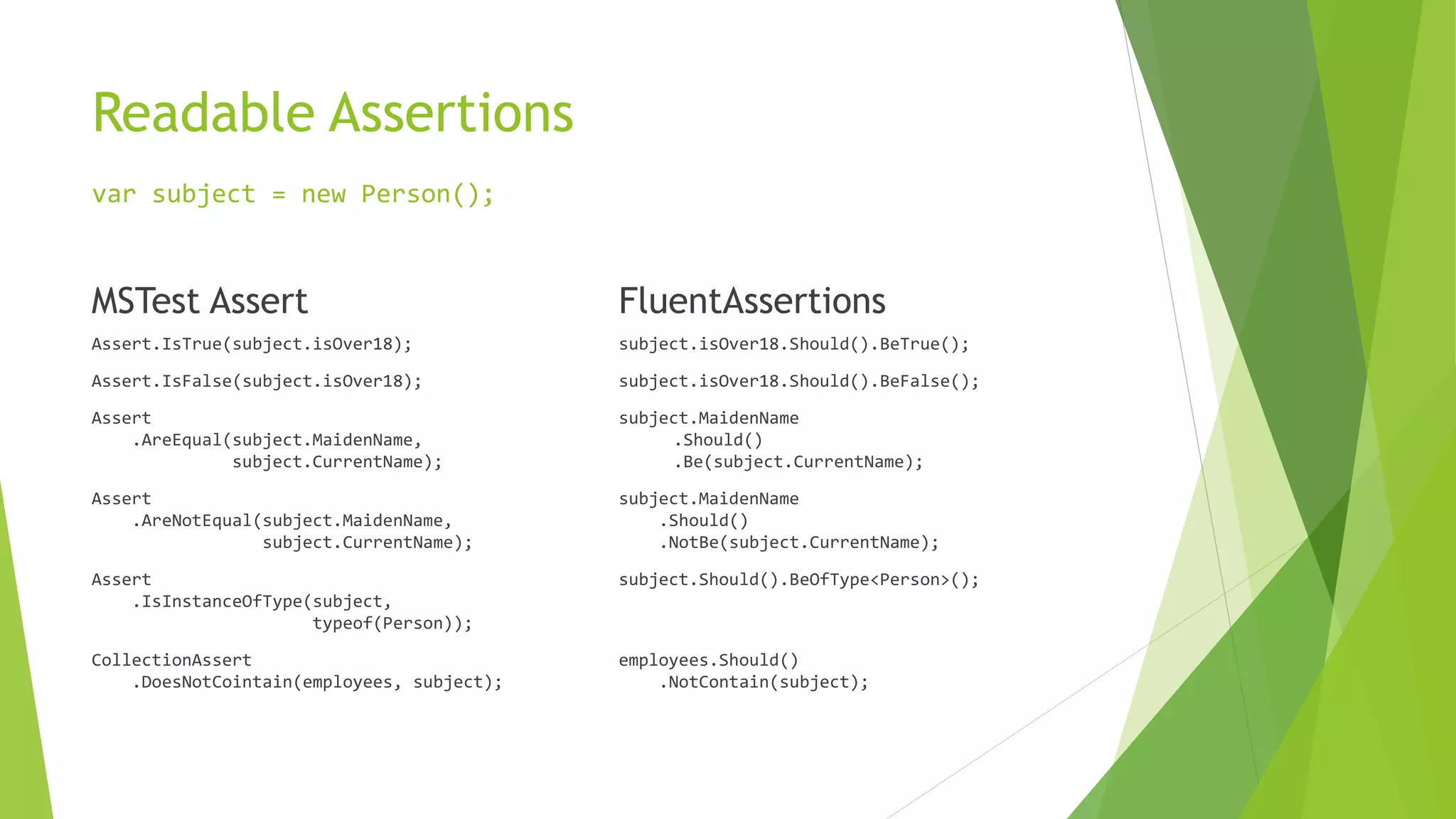
![Readable Assertions
var subject = new Person();
MSTest Assert
[ExpectedException(typeof(TooYoungToDrinkException))]
public void CannotDrink() {
subject.Drink();
}
FluentAssertions
public void CannotDrink() {
Action drink = () => subject.Drink();
drink.Should().Throw<TooYoungToDrinkException>();
}](https://image.slidesharecdn.com/tddbestpractices-180730164557/75/TDD-Best-Practices-63-2048.jpg)
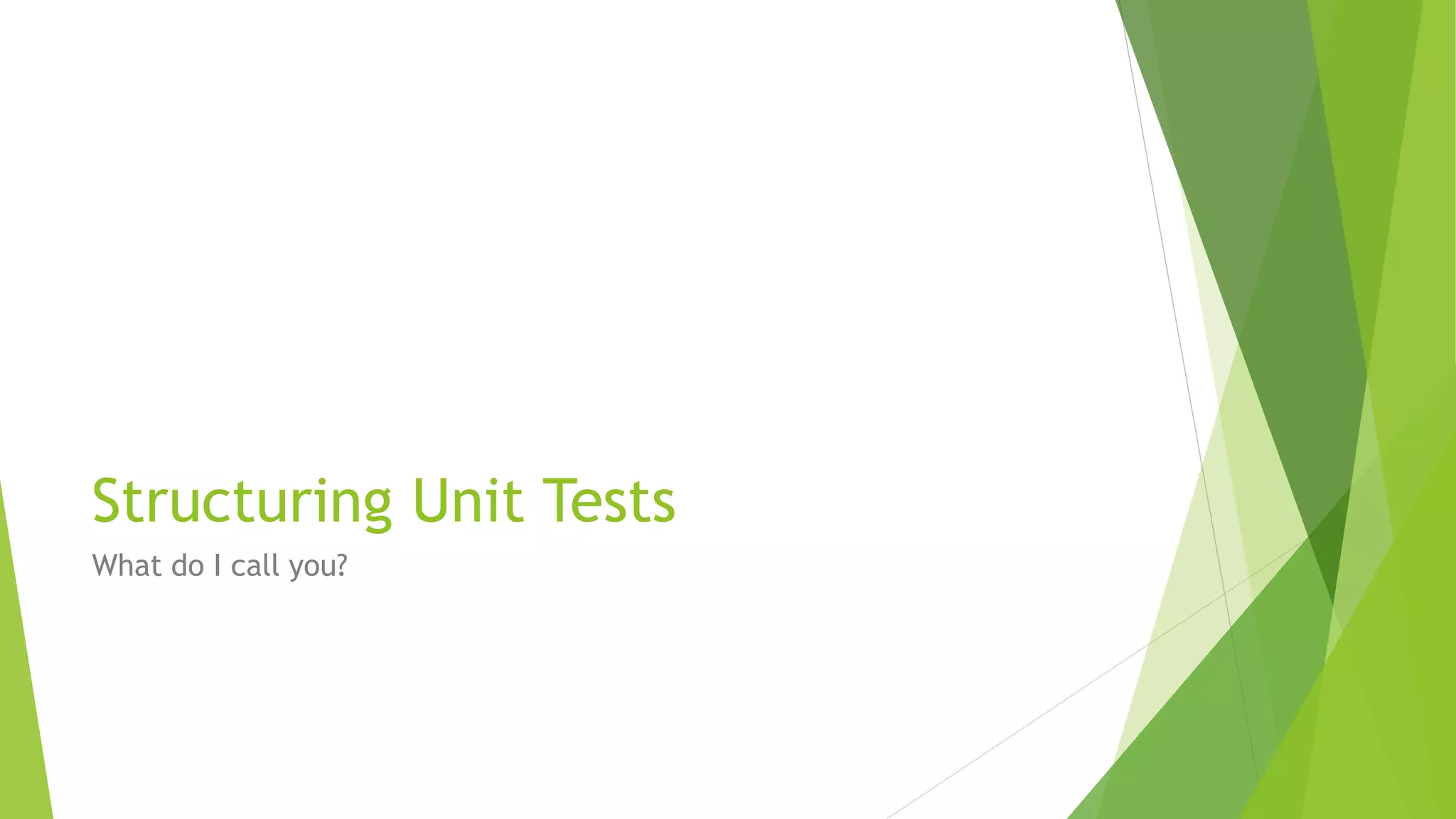

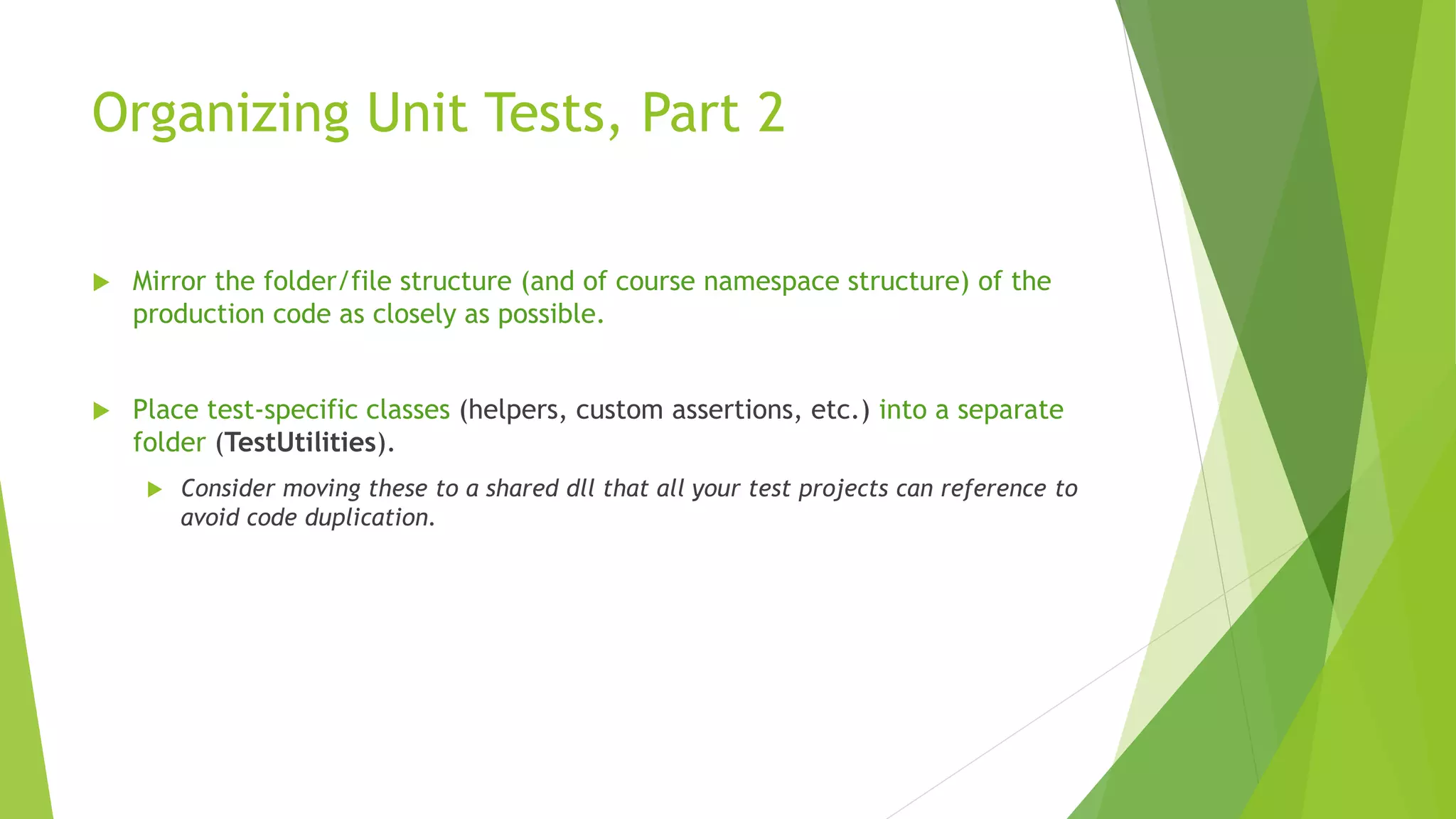
![Organizing Unit Tests, Part 3
For each class under test create a test fixture class, name it
“[ProductionClassName]Tests”. (e.g. PersonTests)
You will most likely want to make this class partial for size-related reasons.
This will contain your “subject” or “unitUnderTest”, that is, the instance of the
class you are testing.
For each method under test create a nested test fixture class that derives
from the containing class ([ProductionClassName]Tests). Name these after
the method that they test. (e.g. IsAllowedToDrink)](https://image.slidesharecdn.com/tddbestpractices-180730164557/75/TDD-Best-Practices-67-2048.jpg)
![Organizing Unit Tests, Part 4
Create test methods inside the [MethodName] classes.
Naming conventions: IsAdult.[…]
StateUnderTest_ExpectedBehavior:
IfAgeIsLessThan18_IsFalse
ExpectedBehavior_StateUnderTest:
IsFalse_ForAgeLessThan18
Should_ExpectedBehavior_When_StateUnderTest:
Should_BeFalse_When_AgeIsLessThan18
When_StateUnderTest_Expect_ExpectedBehavior:
When_AgeIsLessThan18_Expect_ToBeFalse
Use a “Cannot”/”DoesNot” syntax when expecting exceptions
CannotAccept_NullArguments / DoesNotAccept_NullArguments](https://image.slidesharecdn.com/tddbestpractices-180730164557/75/TDD-Best-Practices-68-2048.jpg)
